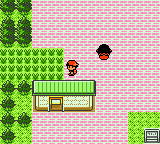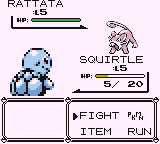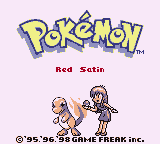GB\C Pokémon ROM Hacking: The 2nd Generation of Hackers and the Global Diaspora, 2009-2020 (Part 2)
From my book "The History of GB\C Pokémon ROM Hacking".
Click here for Part 1 of this Chapter (Chapters 3.1-3.7).
The following extract will cover the last four sub-chapters of Chapter 3 (i.e.: Chapter 3.8 to Chapter 3.11) from my book "The History of GB\C Pokémon ROM Hacking", which cover all the GB\C Pokémon ROM hacking scenes from the period 2010-2020, in this case these chapters are covering the national scenes located in Anglophone countries, whose developments would add and blend to what was being experimented in the rest of the World during the decade.
THE 2ND GENERATION OF HACKERS AND THE GLOBAL DIASPORA: 2009-2020
3.1 Philippines and the Indo-Pacific, 2010-18
3.2 Italy, 2010-19
3.3 Spain and Spanish America, 2013-20
3.4 France and Belgium, 2010-20
3.5 Central, Northern, and Eastern Europe, 2010-19
3.6 South Korea, 2010-20
3.7 At the End of the World: emerging GB\C scenes, 2010-20
3.8 Australia, 2010-20
3.9 Canada, 2010-20
3.10 The U.S.A. after the Diaspora: the traditionalists, 2010-20
3.11 The U.S.A. after the Diaspora: the progressives, 2010-20
(Continuation from the previous parts)
3.8 Australia, 2010-2020
The first scene in the English-speaking world outside the traditional centers (United Kingdom, United States) to fully develop in this period was the Australian one. The country, extended along an entire continental mass, was made up of the most heterogeneous traditions possible, to the point that from the beginning of its contemporary history it was always plagued by an existential doubt about its own identity, exactly as in the case of Canada. Mainly known for the stereotypes made of lands of kangaroos and continents of exiled prisoners, the country in any case rebuilt its own cultural identity during the Twentieth Century, transpired above all through cinema and music, contested halfway between the purest anguish, the most majestic solemnity, and the most mocking of comedy.
In the case of national ROM Hacking, it was this last component that prevailed the most, even if in the long run the other two components would also end up emerging. For example, during these formative years, the country’s youth were exposed to the more typical meme-based goliardy, the two extremes of which are well represented and contained within the extremes of the postmodern comedy of post-television talents such as Vinesauce, reaching the opposite pole represented by the grotesque and the most disastrous of clinical cases such as MichaelDragon800 (famous for his substandard and redundant sung cover of “Spiral Mountain”).
The first recognized Australian Pokémon ROM Hacker was (the previously mentioned) Blazichu (see Chapter 2.4), who however moved to the United States. It would be until the 2010s before an actual Australian GBC ROM Hacking community emerged.
Australian Live Hacks and “Twitch Plays Pokémon”
The Australian GB\C community became internationally famous above all for the contribution given to the international project of various authors which made possible the creation of the first “live” hack in history, namely Pokémon T.P.P. Red (2016-2018), a sort of conversion from RPG to massive RPG that made it possible to play Pokémon Red remotely via text input entered on the chat of the video platform Twitch. Its ideal sequel, Pokémon T.P.P. Crystal (2018-2020), began the monthly trend of adapting other Pokémon games and hacks with the same premises and methods. Beyond the declared or presumed purposes of this operation, the idea of “live hack” was a very important event in the History of Hacking, as it created a new concept and format of mass remote gaming in real time.
Freako
The most famous Australian ROM Hacker of this period was Freako, who best precisely expressed the comic and prank component that hides the underlying existential melancholy and malaise, which was the implicit trait of union of this entire movement that was implied from the beginning.

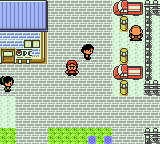
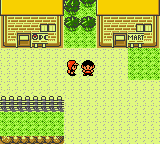



Freako debuted with the first Pokémon Gold total overhaul hack to have been fully completed, namely Pokémon Bronze (November 2012-September 2013). The hack perhaps represented the last example in the history of overhaul hacks created with the binary method of the early days which were created to give the idea of playing a completely new game without however distorting its basic dynamics and functionality. Above all, the game was also an elaborate parody and cultured reference to all those beta dynamics or Glitches that had remained unexpressed in the original games and which now cropped up to haunt the legacy of the franchise: from MissingNo to the hidden truck of the beta games of Gen.1, the game perfected the crazy but perfectly logical idea of the early 2000s childhood era of having sequels to Gold and Silver that also included the missing third medal metal, and in this sense it also became the first hack of the “neotraditionalist” trend. The claustrophobia of the maps and the smaller region was compensated, however, by a few significant evocative additions, as well as by the choice to set internal dungeons in unusual locations (car factories, train stations, etc.) as only Pokémon Crystal World before it was able to do.
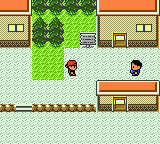
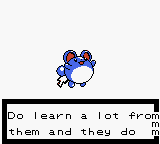

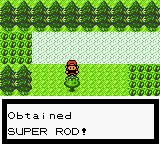
In the meantime, the jester soul of the Australian maudit brought out all his jovial spirit with a couple of entertainments, first with the blasphemous troll hack Pokémon DarkGray Stone (July 2013), created under the alias”PokéMaster8”. This was a hack that parodied “erroneous” contemporary Philippine hacks, such as Pokémon Orb, as well as hacks by non-English-speaking authors (such as 80C and Red Cabusao) — with occasional references to Prism’s tilesets (in turn already used in other hacks by English-speaking authors, as in the case of successful hacks such as Pokémon Chrome by Melash).
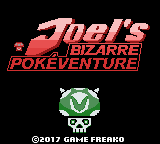

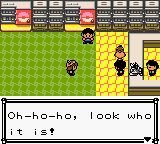



Above all, Freako also offered the zany biography Joel’s Bizarre Pokéventure (September-November 2017) dedicated to Vinesauce, who had been impressed by the fake “disastrous hack” Pokémon DarkGray Stone from a few years earlier. These were five-second floor-rolling rounds of laughter that nevertheless, especially in the latter case, demonstrated the author’s growing scripting skills, and above all they qualified among the best zany hacks ever made, although the author always considered them little.

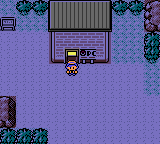
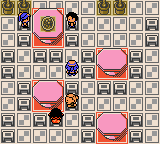
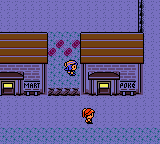
Having perhaps reached a more mature age in which laughter had become bitter and the innocent joy of youth had transformed into a painful memory of latent resentment, also driven by the global re-alignment that had just begun as well as by the take-downs that were reaping illustrious victims, Freako stubbornly sought the masterpiece of the mature age in a disassembled sequel that closed the ROM Hacking experience (in reality already announced after Bronze but never verified until then), i.e. the nostalgic and neo-traditionalist repatriation between old friends of Pokémon Bronze 2 (June 2017-January 2020). Perhaps the most eminent hack of the reflux period, it was a sort of Amarcord of the GB\C Hacking world mixed with Short Movie About Love, a truly profound meditation on the cognition of the pain and evils of toxic celebrity, as well as a sort of comic apologia for voyeurism, between openly voyeur NPCs, instigation of the sin in question, and the role played by cameras and concealment in key events of the game (especially in the post-league). The game also portrays the role of plagiarism and incitement to self-harm to kiddos via social media in a surprisingly shrewd and realistic way, which was an astute observation, even though a bit paternalistic and old-fashioned.
The game confirmed Freako’s acquired talent as a hacker (and above all as a screenwriter, even a dramatic one), even if it suffered too much in terms of fillers and déja-vù in the initial as well as final parts of the game, transforming the final part of the game and the post-league (except for the film-shooting scene) in a colossal forgettable and visibly listless filler, although well executed with the aim of eliminating the claustrophobia that had characterized the first episode. The central part of the story however is the absolute masterpiece of Australian ROM Hacking and the best Gen.2 screenwriting ever since Miksy91’s hacks. Although it is at times uninspiring and has some (actually negligible) flaws, Pokémon Bronze 2 is Freako’s true masterwork and one of the best masterpieces of ROM Hacking GB\C Pokémon ever made, although it is his least popular hack ever and the one that was most ignored and belittled in favor of the prequel, which, although it was quite admirable, lacked the intellectual and emotional depth that shines through here in all its fragile drama, schizoid lust, and irrepressible comedy.
● New Zealand, 2010-2020
Around the same time period, New Zealand also saw a boom in ROM Hacking, although direct contributions to the GB\C context were limited.
The most notable event loosely related to this was the creation of a famous RPG inspired by the style and graphics of the GB\C games, namely Super Pokémon Eevee Edition (July 2010-February 2025) by New Zealander author DarkDoom3000, one of the most successful amateur Pokémon-themed RPGs ever, which particularly inspired Miksy91’s Pokémon Dark Energy. The RPG itself was extremely important not only in popularizing the retro GBC aesthetic but also in legitimizing the integration of extra-canonical game components, derived from other games such as Final Fantasy and Metal Gear Solid, as well as a screenwriting (at times, comical) that bordered on cinematography, sometimes reaching out to the Abstract.
3.9 Canada, 2010-2020
The Canadian GB\C scene developed late, coming to the fore only in the middle of the decade, and included both anglophone and francophone authors — in the case of Quebec — nonetheless, the preferred language of use remained English. The hacks thus produced tended to be conservative and almost claustrophobic in style, betraying the influence of the shy and claustrophobic nature of much of Canadian mass culture.
The Canadian scene was also unique in the fact that it, at least initially, it started from interesting assumptions – being initially focused on Gen.1 hacks based on Pokémon Yellow, i.e. the most neglected basic Gen.1 version — only to then suffer a drastic decline in quality over the course of the 2020-24 Realignment.
HyperHacker
In the Canadian national scene there was at least a precursor of the greatest importance in the field of ROM hacking (not just GB\C), namely HyperHacker. A teenager and prodigy programmer, in 2002, just fifteen years old, he created his first site dedicated to the computer world, HyperNova Software, in which he illustrated all his ROM Hacking works, which spanned multiple consoles.
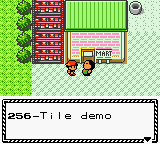
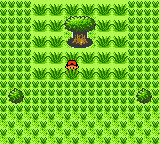


HyperHacker debuted in 2002 with a patch for English Pokémon Silver (one of the first ever), namely the 256 Tileset Demo (2002), a demonstration hack with ad hoc ASM modifications that demonstrated how it was possible to expand and double the graphics sector and push the mapping towards significantly higher levels of detail, already in an era when the rest of Pokémon ROM Hacking (with the exception of Germany) struggled to barely create demented GB\C hacks. In fact, at the time HyperHacker was also one of the first Anglophone hackers to come into contact with the German national GB\C scene, in particular with Tauwasser, who conversely was the developer of the patch for the graphic expansion of Pokémon Gold (differing in operation but similar in intent to the one created by HyperHacker).
Subsequently, HyperHacker dedicated himself to Super Mario hacks, creating in the same period one of the first hacks of Super Mario Kart (the one for the SNES), Mario Kart Omega (2002-May 2004) — the only hack that he managed to publish. Subsequently, he would even try his hand at experimenting on Super Mario 64, creating one of the first hacks of that game in June 2004 and managing to discover the internal workings of the maps. In this period the author was also trying his hand at creating a program for comprehensive modification of Gen.2 games, Hack-O-Matic, published in March 2003, a tool that gave the possibility of making modifications both at the of mapping and in other fields of action, all incorporated into a single program that was much more sophisticated than what was available at the time.



The result of this period of extensive experimentation, research and development was his unpublished hack based on Pokémon Silver, Pokémon Emerald, also known by its full title Pokémon Omega Emerald (2002-May 2004, unpublished), one of the first hacks ever to employ Advanced ASM and one of the first total overhauls ever. The hack – in addition to completely changing the maps, Pokémon attacks, and graphics – introduced significant ASM changes for the time, including a completely modified introduction, the use of a “GPS system” for calculating player coordinates within the game maps, a music player menu, an object counter, and even an “odorometer” (odometer) whose functioning however remains a mystery. The science fiction story, with partly comic implications, is set 50 years in the future, and concerns a time travel to the past in the early 2000s — almost a prelude to some of the premises of future Canadian hacks such as Pokémon New Gold Era, as well as than the preview of GB\C hacks with the premises of time travel, such as Perros VS Aves, Pokémon Pilar, and Kanto Explorers Through Time. By degree of intensity, premises, experiments and views, the hack anticipates similar developments by a good 20 years (and more) and qualifies together with its contemporary experimental and avant-garde German masterpieces of the time, such as Pokémon Midnight Hack and Pokémon Silverstar.
After creating this forgotten milestone of GB\C ROM Hacking, HyperHacker devoted himself to his passion as an amateur computer engineer, and in November 2005 he was among those who discovered the Sony malware that installed itself automatically when their albums music were put on PCs (even just for listening, not necessarily to copy them illegally), detailing their functioning in detail and exposing the serious danger to which the company subjected its customers, a misdeed made worse by the offer to the unfortunates of an “official” remedy offered by the company which turned out to actually be spyware even worse than the virus that the multinational had (clumsily) created — moreover violating multiple licenses. The resulting scandal at the time was truly immense, and it was not difficult to see that HyperHacker would soon antagonize the corporate giants he had just exposed in their dishonest practices. Rather than receive a medal or promotion for services to the community and safeguarding democracy, as many previous or future whistleblowers should have (from the hotel clerk who uncovered the Watergate scandal to Snowden), HyperHacker would instead simply have fallen victim under the blows of retaliation, disappearing from circulation together with its site in July 2007.
Meanwhile, as early as February 2006 HyperHacker experimented with the Nintendo DS and even became one of the pioneers of Gen.4 ROM Hacking (the NDS was released on the market in Japan at the end of 2004, in North America in November 2004, and in Europe in March 2005), although his works in this field remain unknown due of his sudden disappearance.
In addition to being one of the true geniuses of his time and his field, HyperHacker was the living demonstration of how in our era genius is possible but also how, at the same time, it is hated in favor of ignorance and complacency on the part of a “global” billionaire audience (or, better, billionaire caste) and market that loves art, science, and freedoms but which actually hates art, science, and freedoms. But above all, HyperHacker also demonstrated how ROM Hacking was actually an important aspect that permeated the youth digital counterculture of the time, and how it was becoming a sort of universal and transnational youth language indigenous to the Third Millennium.
Curiously, HyperHacker also anticipated the future Canadian national trend of reevaluating the modification of neglected core releases (in his case, Pokémon Silver). Unless there is any misunderstanding, after him, perhaps also due to the immense popularity of GBA hacking, for almost 15 years there was no trace of further GB\C experiences in Canada.
EricGall23 (Québec)
In any case, the first author identified as Canadian to have published a completed GB\C hack was the Quebecer EricGall23, originally a French-speaking author producing hacks in English. On one hand, he best represented the rapid rise and fall of the local GB\C scene; on the other, he represented one of the last embodiments of that fairly innocent and lighthearted approach to the amateur hacking of the origins that was lost to time. By all accounts, the result was a tender schizophrenic mix contested between futuristic scripting engineering and the storybook of a maple forest bard of the 3rd Millennium lost in a world of saccharine wonders. The results were thus not dissimilar from a VR session of A Trip to the Moon or a Lewis Carrol fable.
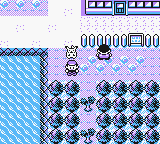
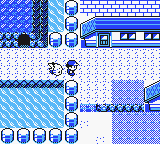

EricGall23’s interest in ROM Hacking is attested at least since the early 2010s with hacks that would see the light of day only several years later, sometimes with several reworkings and reissues from one year to another — such as in the case of Pokémon New Gold (September 2012; Update: 2018). However, the author officially debuted with the restyle Pokémon Yellow Advance (2012-September 2020), a hack that remained unpublished for almost 7 years that finally saw its release during the Pandemic. This apparently extremely traditionalist hack, if nothing else, contained a component of programmatic obsolescence and comical heresies that betrayed a very different type of underlying personality: from the use of dead languages to dialogues that ruin the player's expectations by highlighting the game's obsolescence compared to the present, this “advancement” was actually a prank against contemporary regression.

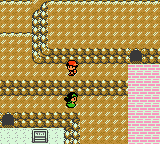
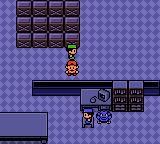

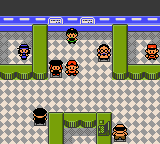
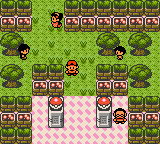
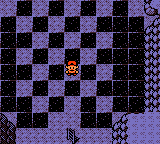
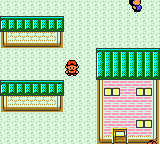

(Screens from Pokémon Gold Sinnoh)
Having moved on to more ambitious premises, in the new decade EricGall23 moved on to the port-over genre with two cousin hacks, namely Pokémon Gold Sinnoh (January 2013-November 2020) — perhaps the best of the two — and Pokémon Gold Unova (March 2020), two hacks that set new apocryphal adventures in their respective regions but which essentially recycled the original game world (including graphics) in favor of new events and competitive emphasis, essentially demonstrating that the original Pokémon games were nothing more than yet another recycling of the Johto games in which the region had been folded back on itself into new configurations that were gradually less and less cube-like.

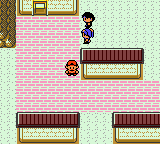
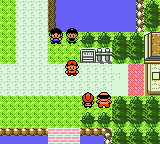



(Screens from Pokémon Gold Unova)
If nothing else, at least Pokémon Gold Sinnoh was important in that it was the first complete Canadian overhaul hack, even though — unlike hacks with similar premises such as Pokémon Bronze, for instance — it lacked significant innovations outside of the elements already present in the original base games.

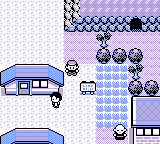




Made famous among the enthusiastic public of the conservative hacks of the re-alignment era, instead of making an evolutionary leap, EricGall23 committed the mistake of his traditionalist predecessors by churning out increasingly competitive and increasingly banal automated hacks, with authentic scams modeled on his previously abjured hack Pokémon Gold Expert (May 2019, lost) of the caliber of the tedious and saccharine Pokémon Red Expert (December 2023), an automated hack “designed for expert players” which in its premise was an insult to the intellectual intelligence of the players, and which in all likelihood its only future purpose could be as training material for artificial intelligence learning to hack ROMs. In this latter case what was relevant were not the gameplay components (bordering on monotony in the long run) but rather the author’s attempt at humanizing the competitive genre with pacifist and humanist dialogs, maybe a little bit redundant and excessive but in any case also highly nonconformist if compared to the usual premises offered by the starting genre – along the lines of what had been done since Pokémon Yellow Advance

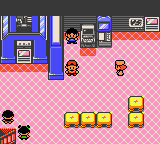

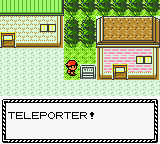
Despite these faux pàs, EricGall23 proved nonetheless to be one of the most gifted GBC scripters of his generation, also thanks to a series of scripting tutorials he wrote (both in English and French). In the meanwhile, precisely to capitalize on his growing confidence with Gen.2 scripting, EricGall23 decided to refocus on overhauling and reworking from scratch his very first project, Pokémon New Gold, thus yielding the faux science fiction of the extended restyle of Pokémon New Gold Era (May 2021-November 2022), a retro-futuristic tribute to the “industrial diabetes complex” in terms of saccharine gaming tone and dialogs but also a more or less postmodern tribute to countless amateur trivia to the world of ROM Hacking and the Pokémon fandom, cleverly disguised as a fairy tale taking place in an over-urbanized, retro-utopic Johto following a complete different adventure path. Almost a mixture between Miksy91’s Pokémon Legend Version and Hello Kitty, the latest revision of the hack proved entertaining thanks to its occasional, abysmal haphazardness and the overturning of expectations when compared to the original game — without taking itself too much seriously.
All in all, despite not achieving all-time masterpieces, mostly because there was no such a need for that, EricGall23 proved to be a rather flexible author devoted to a multitude of different hacking genres, ranging from the extended restyle to the port-over, from the overhaul to the competitive — a rarity in the Post-pandemic world. However, what was even more rare was not so much his diversification of stylistic traits as his occasional witty humor and lightheartedness that emerge from his hacks, a fact that is more unique than rare case considering his parallel interest in scripting and technical tutorials.
ShinySylveon



(Screenshots from Pokémon Yellow Supreme)
The most extreme and reactionary aspect of the (apparently) most “purist” restyle finally came from a Canadian student of Danny-E 33 — the latter perhaps the most extreme and reactionary hacker in the genre of the most “purist” restyle — namely ShinySylveon, also known mainly as SailorMoon, who debuted on the Internet already in 2012. A Canadian author from Ontario with many facets and hobbies, as elusive as mysterious due to her infinitely changeable and multifaceted nature, her career in the world of GB\C ROM hacking was extremely erratic in the early years. ShinySylveon emerged from the scenes only in 2019, initially under the original alias of Kibby123, and then later adopted an infinite number of pseudonyms in what turns out to be a real genealogical charade, whose most famous circumstantial appellations were ValientOrc98, GloomySwordfish7, SailorMoon, Sailorshirayuki6504, and finally ShinySylveon. As per the anagraphically changeable customs of the 2010s among a good part of the Zoomer generation, the sudden change of names would also have alternated with the change of pronouns, and even of years of age, with a series of sudden autobiographical inconsistencies, discontinuities and twists bordering on the detective novel that make hagiographic and biographical work extremely difficult. This split personality is also found in the production of ROM Hacking, essentially contested between the genre of the extended restyle inaugurated by the Pokémon Aqua model and the conservative competitive genre inaugurated by SinisterHoodedFigure in the advanced phase of his career.
However, despite these discontinuities, several constants of the author overlap, especially from a stylistic point of view: first of all, the revaluation of the ROM hacking of the basic versions that tend to be neglected and, in addition, a strong component of nostalgia, both canonical and extra-canonical, which goes to reconnect to an original aesthetic of programmatic obsolescence – therefore partly taking up some of the ideas offered by compatriot EricGall23 with hacks such as Pokémon Yellow Advance and Pokémon New Gold Era. Furthermore, unlike similar colleagues who tend to be more conservative, ShinySylveon does not exclude the modification at a graphic and mapping level, tending instead during his career to a progressive deepening towards these areas as well. Under the pseudonym SailorMoon, ShinySylveon was an occasional collaborator of fellow countryman EricGall23, with whom she contributed to the publication of the final version of Pokémon Yellow Advance, a hack originally created by EricGall23 in 2012 and left unpublished for 7 years.
In a biographically confusing manner, simultaneously using both the pseudonym SailorMoon and the alias “GloomySwordfish7”, ShinySylveon finally debuted as a solo author with what was destined to become the first complete extended restyle by a female ROM hack author, namely Pokémon Yellow Supreme (April 2019-May 2022. Update: March 2024). The hack, the third complete extended restyle based on Pokémon Yellow, was a sort of Canadian tribute to Drake Seawood’s Pokémon Yellow Strike given the incredible graphic and design similarity with the latter’s hack (which in the meantime, already complete, had been set aside). In its premises and intentions, the hack anticipated the general trend that became fully established over the following decade of using the disassembler not so much to subvert the traditional patterns of the game as to reinforce them, leaving the surrounding aesthetic aspect to be an improvement or re-adaptation of the tiles of the Gen.2 games. A subsequent update, carried out in March 2024, also added several nice references and citations to the hacks of the GB\C “canon”. Regardless of appearances and public statements (bordering on parody of bureaucratic language), this hack was also a crypto-parody of the most upright purist and “serious” hacks, in which ShinySylveon enjoys stuffing a formally impeccable presentation with several anomalies that are equivalent to heresies with respect to the starting genre: in this sense, the student surpassed the master.


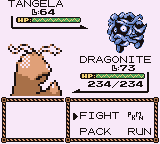
(Screenshots from Pokémon Insane Red)
Having gone by the names GloomySwordfish7 and ValientOrc98, inspired by fellow countryman EricGall23 as well as Danny-E 33 and his circle, ShinySylveon unfortunately made a misstep by following their artistic downward spiral, creating authentic wastes of talent that fit into the traditionalist “Kaizo” competitive hack trend in vogue at the time. This downturn was marked by the creation of three largely negligible hacks, the first of which to be started was Pokémon Gold Supreme (2019-October 2020), a binary hack with similar premises to Yellow Supreme but with much less changes, making it an essentially anonymous hack and indistinguishable from the hacks of 20 years earlier. At the same time, this hack was joined by Pokémon Insane Red (June 2019), a competitive hack almost unchanged from the original which, unlike the previous one, at least also made some additions, including the addition of custom Pokémon icons, even if ultimately it remains more of a historical relic of the period of re-alignment and internship completed at the US GBC elite of the period.

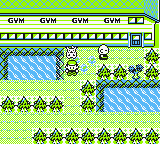
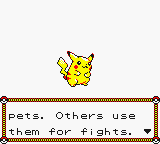
The final phase of this hyper-active period finally occurred when ShinySylveon decided to mix the experience of the debut with its contemporary phase of competitive ebb, thus arriving at Pokémon Yellow Kaizo (2019-September 2020), a hack that, despite having fanciful mapping, remained unfinished in the beta phase — the last version was beta 0.4. While it was decidedly less incisive and memorable than its predecessors, at least one of the few constants of this erratic career was already evident: the emphasis on ROM hacking of generally neglected base builds.


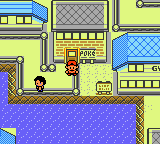
After this oscillating phase in which ROM hack genres and nicknames alternately competed for control of ShinySylveon’s career (and mind?), she subsequently moved into a more stable phase that picked up where her previous, more notable achievements left off. Deeper into both decompilation and binary ROM hacking, and finally moving on to her latest and most famous nickname, ShinySylveon achieved a much more concrete result with her next Gen.2 hack, Pokémon Ceylon (March 2022. Updated: December 2024), the second complete restyle-overhaul hack of Pokémon Silver (after Bond’s Pokémon Celebi from 2002), a sort of cross between O\A\C 2.0 (without Safari mode) and Pokémon Forever. The hack, which mixed disassembly and binary hacking, was the spiritual heir to Pokémon Yellow Supreme, from which it took several stylistic premises, including the additions in the competitive field (even with the occasional use of ASM), however also expanding the emphasis on mapping (which also sees the addition of new maps) and occasionally even on tilesetting. The last update at the end of 2024 also saw (finally) the first concrete attempt to modify the title screen more significantly than on previous occasions, signaling a clear improvement over the previous results. After this season of hyperactivity, ShinySylveon entered a phase of hiatus, dedicating it mainly to studies and manga, only to subsequently re-emerge occasionally during 2024 for some updates to its major hacks, starting with Yellow Supreme (in March) as well as some decisive improvements (including the addition of ASM) to Pokémon Ceylon between October 2024 and the end of the year.
Unlike EricGall23’s massive success – driven by a post-pandemic audience that praised his more banal late competitive hacks rather than his more relevant works – ShinySylveon was essentially overlooked (almost entirely) by the public, betraying the underlying dishonesty and mediocrity of the average post-2020 audience that preferred even more banal hacks than these, which at least demonstrated a greater amount of modification. On the other hand, his was mostly an average audience that was far too young to remember hacks like Pokémon Epic Gold and that at most remembered Pokémon Pyrite: this kind of audience – being constantly bombarded by propaganda via chat that decreed the hacks of the rest of the world as unworthy and inferior to the classics of U.S. formalism – demanded exactly that kind of regressive hack from its authors, diminishing and watering down their intentions and thus decreeing their decline.
Canadian GB\C Hacking: To Recap
Curiously, what emerges from the first experiences in the Canadian area is a strange combination whereby genres and stylistic aspects of the more traditional U.S. orthodoxy (Chaos Rush, Rangi, Danny-E 33, SinisterHoodedFigure, JojoBear13, Crystal_, etc.) are implicitly jeopardized by some of the most assimilable elements (in small doses) of Italian ROM Hacking GB\C, in particular by the more “elegant” fringe of the national school: the early adoption of disassembly as advocated by Sawakita, the purism of 95Girl and HalfShadow, and above all the disassembled stylization of Pokémon Yellow according to the “classic” style of which Drake Seawood was a pioneer.
Unfortunately, the Canadian GB\C scene was also the most diminished and disfigured by the emerging reactionary and involutionary tendencies of U.S. conservatism (video-ludic and otherwise), ending up eliminating precisely those stylistic and emotional components that had made the original Canadian scene unique compared to the others: the GB\C retro scene of the maple country was essentially colonized by the conservative neighbors across the border and reduced to a tabula rasa of automated rebalancing.
Fortunately, the original contribution from a stylistic and emotional point of view left by these Canadian authors marks a rather unique experience in the History of GB\C ROM Hacking: judging from what was achieved, and refuting the most popular hearsay of the period, the “danger” hoped for by the most senile and authoritative official fronts was not so much that of making the country of maple trees the 51st united state but rather that, in the long run, the “underground railroad” provided by the counterculture and Canadian ROM hacking could provide an escape route (whether cultural, imaginary, or physical) to many U.S.-based cousins across the border — who, in the decades to come, will probably end up wishing for the opposite scenario.
3.10 The U.S.A. after the Diaspora: the traditionalists, 2010-2020
The simultaneous occurrence of two epochal events such as the publication of the 2010 demo of Pokémon Prism and the appearance of the national scenes (both English-speaking and otherwise) – both of which occurred in the same period – definitively put the fulcrum of US GB\C ROM Hacking into crisis: since then, it would not be the same again, and it never fully recovered from the impact of these two events.
This was the biggest difference compared to GBA hacking, as GB\C Hacking was the ROM Hacking of the origins and by this point it had a well-established tradition, unlike GBA hacking which had almost immediately transformed into a business that was worldly, open, accessible, and markedly amateur. Worse still, GBA Hacking showed signs of integration between the most extreme avant-gardes and the “lower” and vulgar genres, attracting the ire of the GB\C elite who from then on always publicly belittled GBA ROM Hacking as a fashionable aberration and a corruption of intents and purposes.
Therefore, from around 2010 US GB\C ROM Hacking underwent a clear fracture, which became difficult to reconcile: on the one hand, some members of the new generations of ROM hackers remained fascinated by what was proposed by the hacks and by the more radical regional experiences, even at the cost of running into some errors, vulgarity, and heresies along the path, while on the other side there were those who missed the real or presumed “high quality” hacks, especially of the restyle genre, which offered the opportunity to try their hand at the most technical ROM Hacking possible without compromising themselves with all those mundane components that made the more eccentric (and bizarre) hacks successful ones.
Rather than becoming a fracture between familiarity and the avant-garde, or towards the canons of Pokémon or further and further away from them, this fracture instead became first and foremost a fracture made along the lines of the GB\C Hacking tradition and the canons of “respectability”, according to some presumed standards of seriousness, vaguely generalizable according to the dichotomy: “either you do anti-traditional hacks that have betrayed GB\C tradition in favor of GBA nonsense, or you do traditional and purist restyle GB\C hacks that respect the official Pokémon games and reflect them without distortions”.
Unlike the “progressive” line of GB\C ROM Hacking, which never consolidated into a real current and always remained a mixture of the most heterogeneous and disparate experiences, the initial “purist” and “traditionalist” line came together in its own organized, almost reactionary movement, hostile to any ROM Hacker, English-speaking or not, who went against the dictates of this community. Being more organized and extreme, within 4-5 years this last line ended up becoming the dominant orthodoxy of the GB\C elite, ending up undermining and alienating (on purpose) the old guard and the more progressive users from “niche” forums and communities. The “coup” occurred mainly on the Skeetendo forum between 2013 and 2015, a period in which almost all hackers not in line with purism were removed, provoked, or otherwise ignored.
Although there had been unsuccessful attempts to expand into other circuits according to a logic of “continuous struggle” and retaliation at all costs according to the model for which hackers such as Mewthree9000 were the pioneers, the movement, essentially led by Danny-E 33 and the famous “traditionalist” authors of the old guard, eventually temporarily gained the upper hand in terms of popularity between 2015 and 2020, only to fall victim to its own success.
In fact, from 2020 onwards, a generation of amateur “ROM Hackers” largely inspired by the “traditionalists” managed to acquire awareness and familiarity with all the basic theories and techniques favored by the movement, such as disassembly in particular, except that they started churning out a series of purist “restyle” hacks of horrible realization value in the hundreds and thousands: although coding serious errors in the compiler causes the assembly of the ROM to stop, much simpler code errors that escaped the authors’ review meant that the “fine-tuning” hacks (hastily created by “authors” looking for immediate success) were in reality poor and often incorrect – certainly not as incorrect as the poorer binary hacks, even though this led to a considerable lowering of the standards of average quality, resulting in the complete opposite of what the “purist” and “traditional” movement had hoped for, ultimately decreeing its end.
● The Genesis of Tradition between Minimalism and Competition
To better understand the U.S. traditionalist movement, it is needed to take a step back ten years earlier, precisely when Electrike Inc. became the precursor of the facts to come by publishing his Pokémon Gold Revolution (November 2003), a mediocre restyle of Gen.2, unfinished beyond Goldenrod City, which limited itself to changing the maps with a few simple modifications as well as some aesthetic tweaks to secondary data such as levels. Despite its incompleteness, this became one of the most popular hacks of the time, second only to Pokémon Aqua – from which it drew heavily, and badly. At the time, the German hacks of the same years were doing significantly better and ended up becoming the most influential in the short and long term. However, ironically, this hack was itself developed with those tools created by the same German hackers who published them that month.

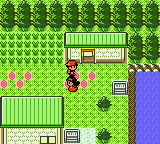

It was an isolated case (which was harshly criticized by German enthusiasts, and rightly so), which however had future consequences in the creation of GB\C elitism itself as well as the distrust in letting random teenagers indulge in elaborate programs but dedicated to creating extremely successful mediocre hacks.
A similar fate occurred a little later with the hack (by an anonymous author) Pokémon Amatist (December 2003), even more incomplete and with the title itself erroneous and distorted.
Ironically, the elitist and traditionalist GB\C movement itself descended from here and from this type of hacks.
Chaos Rush

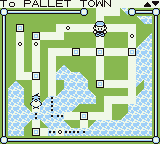
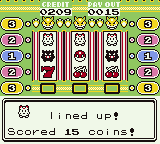
In any case, the real genesis of the movement occurred with Chaos Rush — who in 2010 was already a veteran, having created a more competent re-adaptation of Pokémon Green (2010-11) initially created by Mateo and Pyro under the name of Skeetendo Inc.
He published what undoubtedly became one of the most popular GB\C hacks of all time, namely the mediocre Pokémon Epic Gold (December 2010), the most overrated hack of all time together with Pokémon Pyrite, a “catch ‘em all” hack that allows players to catch all 251 Pokémon in Pokémon Gold but which, unlike Jeremy’s trilogy of “upgrade” hacks from ten years earlier, did not incorporate any type of modification at all that would suggest that it was a Hack ROM rather than the original game. Worse still, an equivalent “Epic Silver” or “Epic Crystal” was never created to justify the choice. The hack, surprisingly, instead became one of the most popular hacks ever created, for a time even surpassing the popularity of hacks such as Pokémon Prism, considered such by an audience that played hacks but actually hated hacks. (Actually, Jeremy did create “251 versions” of Pokémon Gold & Silver in 2001, therefore Pokémon Epic Gold was indeed already obsolete by the time of its creation).
The nadir of the “wealth operation” celebrated for this hack by know-it-alls who loved the most banal sensationalism was so profound that, even 12 years after its publication, Pokémon Epic Gold continued to appear at the top of the rankings of the “best ‘hacks’ ever made”, without the public even knowing what it was about – the most honest of the popularizers, regardless of the choice of first position, at least took the burden to describe it and specified that their ranking was a matter of personal taste (as it should be), while for a long time, quantitatively, it was ignorance and copy-pasting of rankings that prevailed, especially in chat discussions.
Crystal_
In the wake of this gilded catafalque of ROM Hacking, Pokémon Pyrite (2012-December 2015) by Crystal_ essentially resumed the pioneering laziness of Chaos Rush, however extending the pretext of the “ROM Hacking masterpiece” even to the minimum (small from a quantitative point of view) adjustments made to the maps: the maps of the external cities in Johto, for instance, are completely unaltered. The big, exciting news for the vast public was rather the levels of the opposing Pokémon: although there had been far more influential hacks that had raised the levels and were even severely panned for doing so — the most striking examples of which were Pokémon Orange Islands Adventures, Pokémon Brown, Pokémon Grape and, above all, Pokémon Team Rocket Edition, whose levels rise faster than any other hack under Lv100 – the public praised the incredible leveling beyond measure. The hack, which took three years to complete, could have been created in 24 hours using the same tools of the time with which it was created. Obviously, the real key to understanding the ROM hack lies in reading its metallic title, which refers to “fool’s gold”.
Most likely driven by the awareness of having added very little to the original starting game, Crystal_ made some revisions to Pokémon Pyrite between 2015 and 2016, including the addition of scripted events for catching Legendary Pokémon, demonstrating that, in reality, he could have made more substantial changes if only he had wanted to. An author originally from Spain, as it would later be discovered after the Pandemic, Crystal_ was nevertheless much more akin to the US GB\C hacking movement than to other Hispanic authors as a ROM hacker, both in terms of style and linguistic choice.
His greatest achievements as a ROM hacker were achieved not in hacks but rather in research carried out on the disassembly of Pokémon Crystal, as well as in his occasional group collaborations, often more akin to glitch research than traditional ROM hacking, with authors and researchers of the caliber of TheZZAZZGlitch and Sanqui. Unfortunately, for mysterious reasons, he never thought to integrate these unusual (and advantageous) components into his hacks, preferring instead to go down in History as a pioneer of conservative and reactionary “QoL hacks” rather than as a visionary author of “Glitch hacking”. Evidently, the influence of US conservatives had taken over.
Break

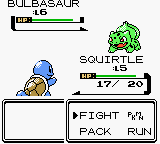
The average tendency of conservative US ROM Hacking at the time and in the future was perfectly embodied by reactionary hacks inspired by the two predecessors previously mentioned, with hacks such as Pokémon Proud Eyes (December 2013) by Break, that is, creating irrelevant hacks almost completely unchanged from the originals in which the only salient differences were the increased level of the opponents and the eventual addition of truly negligible graphical improvements (mostly spriting). These were hacks of (sometimes, enormous) success halfway between the minimalism of the first US ROM hacks and the aesthetics of the competitive genre that Miksy91 pioneered, with the proposal of minimal furniture hacks for an audience that openly hated hacks with more profound changes and that explicitly asked to remain attached to the franchise. In fact, this phenomenon was the most direct anticipation of the future phenomenon of “casual viewing” of audiovisual products used as random background filler that became established during the post-pandemic era ten years later.
SinisterHoodedFigure
The most competent ROM Hacker of this generation of interior designers was the most influential in the long run, namely SinisterHoodedFigure, the official creator of the competitive ROM Hacking genre.
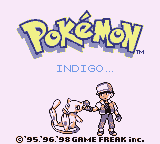
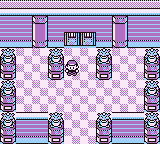
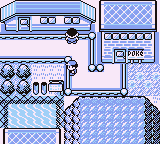
Essentially anticipating Pokémon Pyrite and smoothing out the Dadaist tones of Pokémon Crystal World while maintaining the latter’s abnormal levels unchanged and re-adapting the idea for a Gen.1 audience, the competitive guru debuted with his best hack, Pokémon Indigo (December 2012-January 2014), a pleasant restyle hack that raised the levels and difficulty of the game beyond measure. Available in two versions, one difficult and one impossible dedicated to GameShark fanatics, the hack also changed the maps and exchanged the Unknown Dungeon with the Power Plant, ensuring that all the legendary Pokémon could be captured in the same place only after beating the Elite4 (his true flash of genius). Anyway, this was the first official “Kaizo” hack (actually, the first one ever was Miksy91’s Pokémon Ultimate End from 2009) and perhaps the only one destined to remain his best, especially compared to all the others that followed.
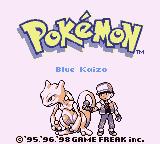
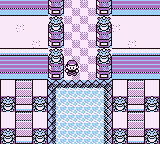


After this significant and extremely successful class work, SinisterHoodedFigure thought it best to remain and cultivate the little garden he created, capitalizing on that success for the rest of his career towards infinity and beyond, assigning the exotic and oriental name of “Kaizo hack” to the competitive genre as per the youthful orientalist and consumerist “weeapoo” tradition in vogue in those years (with enormous influences on the choice of hack names in the following years), resulting in the domestically acceptable remake of Pokémon Blue Kaizo (March 2014), essentially the simplified photocopy of Pokémon Indigo for an audience that had asked for exactly that type of hack less than a month after the latter’s debut. Apart from the mapping designed to force the player to bring several “HM slaves” into the team (i.e., Pokémon that only know HM Moves to be able to continue in the game), the hack did not exude much of sadism but rather of creative laziness and déjà-vu on a “competitive” level.
Increasingly self-indulgent, the author flooded the world of ROM Hacking fandom with ever more competitive, ever more popular, and ultimately ever more boring “Kaizo” hacks, later moving on to Gen.2 with the dragon-chase gymnastics of Pokémon Gold Kaizo, Pokémon Crystal Kaizo (August 2014) (the latter, it seems, “forbidden” in 2017 by GameFreak, assuming it’s true), an idea that would have generated one of the most successful (and most tedious) Gen.3 hacks ever, Pokémon Emerald Kaizo, the most overrated GBA hack ever, a hack so banal, soporific, and irrelevant that “not even sleepwalkers are fed it” (cit.). The real credit for these hacks goes to the Youtubers who made them exciting with their commentaries, and not to the hacks themselves, which are often the most gratuitous thing there can be in terms of laziness.
The example of SinisterHoodedFigure demonstrates how even the most resourceful of talented authors and the most brilliant of ideas can be serialized in a chain of self-indulgence that makes it the most tedious of practices.
To these milestones (or tombstones) of mainstream ROM Hacking, there was also a small contingent of more amateur or niche traditionalist restylers.
● Comedic Throwbacks

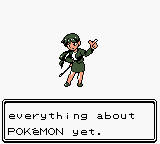

The most lively and bizarre of these was Ayato, who decided to create Pokémon Lead (September 2010, lost), a restyle of Silver that was apparently extremely traditionalist, but which was derailed by bizarre characters and what would later be true heresies regarding the genre. The hack, which was supposed to feature new music, was actually focused on the extremely ambivalent relationship between the protagonist “Sal” and his nemesis, a psychic seer called “Gothis Lolita” who, as an integral part of the plot, kills the protagonist – the first ever case of a ROM hack that involves the death of the protagonist before the end of the game (a bit like in Hitchcock’s Psycho). The introduction of the game by a “S&M” dominatrix equipped with a horse-riding crop whip completes the perjury. Despite this compelling background and premises, the hack itself was not very modified, a sign that the greatest difficulty in ROM Hacking is the direct transposition of ideas into the game rather than the transposition of the game into ideas.

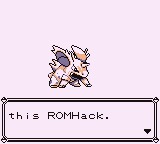

Similar premises firmly anchored to the original Gen.1 Hacks were instead shown by the modest Pokémon Intruder Alert (April 2010) by BusterTheFox, a sort of explicit vintage homage to the debut hacks of the elegant and comical pioneers of the genre such as Andy’s Translations or Philip Reuben.

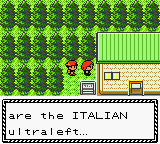
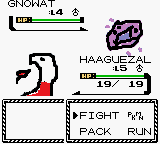
Of a completely different comic nature was the literally philosophical hack Pokémon Light Platonism (February 2016) by Illumine, a GBC parody of Pokémon Light Platinum which was a cross between a Nietzschean dissertation, an AdvanceMap session created under the effect of 9mm of Benadryl, a let’s play of Pokémon Silver played with the screen turned off, and a scribble poured onto the GameBoy screen as if it were an artwork by Pollock.


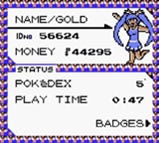
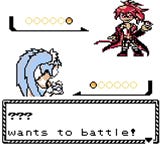
However, the most experimental of the traditionalist ROM hackers of the early 2010s who were devoted to comedic aesthetics was (the largely unknown) Airikita, who made the unreleased Gen.2 hack Miku’s Pokémon Adventure (May 2013), a Pokémon Gold-based hack which, among other things, was the first hack ever to implement the functionality of stealing Pokémon from trainers during battles, thus anticipating works like Pokémon Thief Red, Pokémon Team Rocket Edition 2, and Pokémon Grape. Nonetheless, this unreleased digital hierogliph stood out mostly for its haphazard, grotesque “weaboo” premises, which comprise oddities of the caliber of the addition of vocaloids as rivals (“Vocaloid” being a Japanese phenomenon that consists of androids and other furniture posing as fake music popstars that act in between a vocal synthesizer and a showbiz automata). The hack was also to feature new music and an increased likelyhood of shiny Pokémon encounters. Despite these compelling (and highly original) picturesque premises, this Harlequin of ROM Hacking always remained firmly anchored to the unaltered original base game from a planimetric and development point of view, thus reëlecting the original game’s base as the model template — and, unfortunately, his antics were not to be preserved for posterity.
● Traditionalist Crossovers



Unlike its peers, GeminiRage was the only one to attempt to follow up one of the traditions of the movement’s origins which however had been (temporarily) set aside or ignored, i.e., the crossover genre. Taking advantage of the little-appreciated base of Pokémon Silver, he created Touhoumon (April 2012-July 2018), formally a starting point of cross between the Touhou franchise and Pokémon, essentially creating a mix between Pokémon and the Winx. The hack stands out mostly for its cute and sweet spriting, a sign that there are different ways of doing restyles, especially traditional ones (the rest of the game was almost identical). Having dedicated body and soul to the project for four long years, despite its moderate success, the author eventually retired.
● Peripheric Restylers
It was during this time that US-based ROM hackers started mimicking the restyle hacks from the rest of the world, most notably the ones made by Miksy91 at the end of the previous decade, albeit with less consisting changes overall.

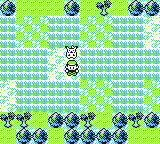
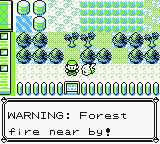
The earliest example in such sense was that of TheUser, who made Pokémon Thunder Yellow (May 2010-September 2014), a sort of depleted Pokémon Yellow Reborn with few precious changes meant to enhance the original game without distorting it.
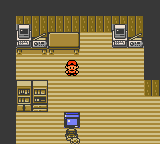


D35tr0 created Pokémon Silver Forest Take-Over (March 2012), which is the Gen.2 equivalent of one of the first Gen.3 ROM hacks ever made, Pokémon Forest Nature from 2002. The kabbalistic purposes of the botanical infestation of the latter were re-proposed here with a proportional increase in vegetation, even to the detriment of the ocean – with beached swimmers giving the impression of abandoned severed heads – signaling more a laziness in construction than an inspired stylistic choice.


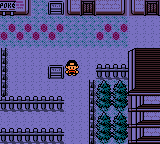
Even more hurtful and disappointing, CH666’s restyle Pokémon Sunset Horizons (April 2014), unlike what was done by Pokémon Secret Friendship the year before, legitimized the traditional genre of “rebalancing” also by inserting a dose of the formal mapping opted for by Pokémon Pyrite with the addition of jumps that made the character get stuck with no escape route, an element that could also have been a postmodern essay on the great leap forward represented by the entire purist scene if it hadn’t been for the fact that six years later the author would have attempted similar hacks that were decidedly more banal, as in the case of rebalancing hacks such as Pokémon Crystal Calm (September 2016).
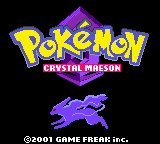
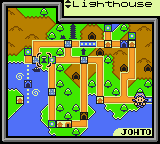
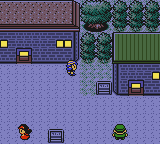
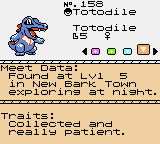

If nothing else, his next hack, Pokémon Maeson (February 2021-March 2023), actually demonstrated that CH666 could also create original and pleasurable hacks when he wanted to.
● Philology of Tradition



More purist but at the same time more philological, ShaneM created an adaptation of Pokémon Green (March-May 2013) based on the Western versions, a more faithful version than the “unfaithful” adaptations of the early 2000s and which restored even the most minute details – and, most importantly, translated the censored texts from the Japanese version, as well as stabilizing various bugs, including the most famous one: MissingNo. Having made several revisions of an increasingly free style (up to “Rev D”), ShaneM renounced the previous ones in 2015 with “Rev E”, which however remained unpublished. Subsequently, Chaos Rush and others saw fit to plunder the legacy of this adaptation, re-proposing in 2017 an update of the 2011 version carried out in the name of Skeetendo Inc., which was essentially the domestically acceptable version of ShaneM’s. Finally, MontBlanc decided to update the work at the age of disassemblies in September 2023.
● Borderline Traditionalism between Gothic and Mythology
Ax461
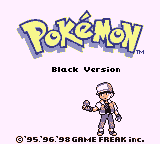
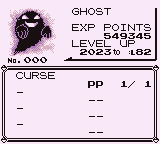
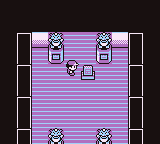
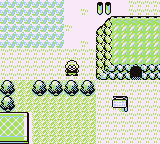

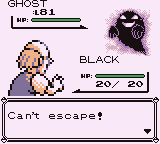
In the meantime, the author destined to embody the paradox of the “traditional” hack extremely famous in the collective imagination but of whom almost nothing is known was Ax461, who linked himself to a very different strand of tradition, namely that of the amateur gothic literature of creepypastas. Inspired by the original myth of the haunted game from the early 2000s, as well as by an April 1st joke, Ax461 exorcised the myth by embodying it in the famous Pokémon Creepy Black (April 2015-April 2017), more simply known as Pokémon Black, one of the first disassembled hacks of Gen.1, which effectively transposed the legend down to its minutest details, making him the equivalent of the Brothers Grimm or Tolkien and Lovecraft of the ROM Hacking world. The hack was published during the era of the creepypasta and haunted game boom and became one of the cornerstones of the early creepy genre thanks to the fact that it was the second Gen.1 creepy hack to be completed.
Piclarv
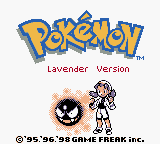
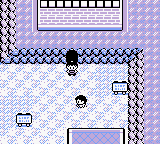

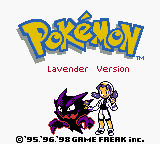
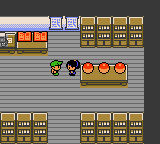
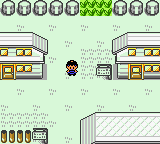
Similar gothic or related premises embroidered in a traditional context were actually anticipated by Piclarv, whose Pokémon Lavender (2013-January 2015) was the second Gen.1 creepy hack and the first to be completed. One of the first disassembled Gen.1 hacks, this was also destined to become the first creepy Pokémon hack with a female protagonist. Starting from basic mythological ideas (e.g. the legend of the “Lavender Town Syndrome” of 2000) as well as from the classics of the first pioneers (e.g. Pokémon Brown and the MissingNo instead of ghosts), this hack essentially proposed a “reduced” adventure based around Lavender Town and the beating heart of Kanto, compacting the most intense section of the original game into a gothic re-telling that ended after the canonical rescue of Mr. Fuji at the top of the Lavender Town Tower – leaving the rest of the original game unchanged as an extra, a bit like what happened previously for Pokémon Mew. Having updated the hack in 2021 with the introduction of full colors and the latest trendy features as expected according to the new traditionalist dictates of the post-prismatic and post-winemaking era, PicLarv confirmed himself not so much as a traditionalist as an adherent of the evolution of that tradition.
Camerupt

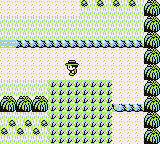
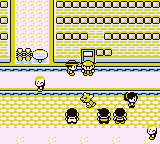


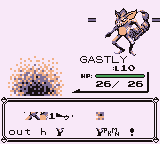
The last of the Vikings of that scholastic and picturesque tradition of legends around the rise of the Japanese myth was a certain Camerupt, who debuted with two disassembled hacks when that era was now coming to an end. If Pokémon Periwinkle (November 2020) was essentially a low-budgeted (and, except for the spriting, low-effort) transposition of Pokémon Clover (the infamous and controversial and extremely successful Gen.3 hack) in the era of the disassembled restyles of Pokémon Yellow, his most famous work, Pokémon Factory Adventure (November 2020) was instead reinserted into the tradition of the myths and Photoshopped Fakemons of the origins, redecorating the little trees of Kanto and infesting the region with the most bizarre of monsters conceived by the ghosts of teenagers who went down in History for their macaronic spriting. The hack essentially updated Pokémon Secrets & Rumors into the age of instant gratification and cost savings on porting offered by the disassembler. There also was a futuristic randomization system — actually quite problematic and the source of dozens of serious errors that make the game unplayable due to the countless interruptions and freezes, especially in tall grass — and the implementation of the contemporary “open world” system (actually made possible more by the elimination of the architectural barriers of the original game than by the clever idea, exactly as in the case of the contemporary Pokémon Crystal Clear). All in all, Camerupt created a new type of complete traditional restyle that leverages the originality of the furnishings rather than that of the scaffolding that supports them, consequently becoming one of the most influential (and least boring) ROM Hackers of the next generation.
● Rebalancing and Real Estate Polishing
One of the most talented and willful ROM Hackers of all time, namely Rangi, the major contributor together with Kanzure for the compilation of the Pokémon Crystal Disassembly, thought of creating an alternative basic version that included several bug fixes and additions for Pokémon Crystal, essentially re-proposing Mateo’s idea of Pokémon Red++ by combining it with the idea according to which players prefer to play a game “cleaned” of errors rather than a buggy one — nothing further from the truth, considering the success of MissingNo and the Cloning Glitch of Gen.2 games. Rather than thinking of stabilizing the most harmful or tedious effects of those errors, Rangi instead thought of removing them completely, thus arriving at the Pokémon Polished Crystal patch, designed more than anything else for authors struggling with disassembly who precisely needed those repairs to be able to propose instead much more extensive changes — a rather noble aim in fact. Unfortunately, this modification was compiled into a playable patch and became the “best Pokémon Crystal” ROM hack of all time, by an audience that evidently never claimed to appreciate Pokémon Crystal and hacks based on it on it for what it was, an audience that now found appealing the idea that hacks should mirror the original games, improving them and making them seem better than they actually were, rather than modifying them because in reality the original Pokémon games did quite a bit suck — so much so that players eventually invented new ways to even play them and make them more interesting, from bug triggering to Nuzlocke game mode and so on. This event too would seal several future events.
Added to this tedious seventh seal of amateur ROM Hacking was the bubonic plague of “rebalanced hacks”, well exemplified by authentic successful scams such as Pokémon Crystal Perfect, Pokémon Pure Blue, Pokémon Trading Card Game Rebalanced, and so on.
Note that at this point in History it was very often more popular to see hacks played by others rather than experience them first hand after getting an idea of what they were like: many of these hacks only served to fool GameFreak’s algorithms which, at a certain point, even persecuted YouTubers dedicated to video series on Pokémon games (a practice that began in 2014 and then ceased around 2018 following numerous protests).
● Non-Kaizo Competitivity
Epseta
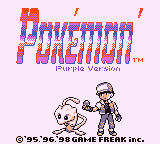
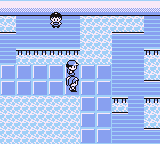

The only competitive Gen.1 hack of the period that stood out a bit more than the others was Pokémon Prime Purple (April 2015-August 2016) by Epseta, the first disassembled competitive hack, a sort of pre-metallic Pokémon Pyrite with mapping changes consisting only of the internal maps. This was practically the only hack of this type to change the name, the title graphics, and something of the graphical aspect: the competition did much less and, in fact, soon after the trend would soon be downward if not negative in terms of (lack of) additions.
● Minimalism Between Competition and Restyling
Indeed, sure enough, the opposite of the trend of “competitive” and decorative hacks would emerge, i.e., the “subtractive” one, perhaps a little more original and honest than the exchange of chairs on the deck of the Titanic which was now the Pokémon franchise.
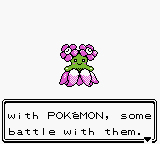
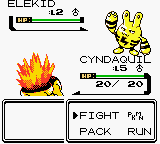
This new type of minimalist competitive hacking was anticipated by Pokémoner2500, who debuted with Pokémon Gandolinium (December 2012), a Pokémon Gold hack that replaced almost all wild Pokémon and opponents with basic forms and “puppy” Pokémon. Although he never knew it, this ignored and snubbed author had just created one of the most successful trends of the following era five years in advance – although, unlike his successors, he was not recognized with the same level of apotheosis.
A 2017 troll titled “Pokémon Special Magikarp Edition” was the other preview of the minimal avalanche that would soon hit: a Gen.1 hack in which all opposing Pokémon are Lv5 Magikarp.
And so it was that the world finally arrived at the famous Pokémon Little Cup by GreenAndACat (September 2019), a competitive Gen.1 hack in which all opposing Pokémon are at Lv.5 in basic form, essentially synthesizing its lesser-known predecessors. The success and level of challenge no longer due to Kaizo-style exaggeration but to austerity was such as to create its opposite phenomenon. Unfortunately, this hack also legitimized the tendency to keep the rest of the game unchanged, a further trend that would forcefully impose itself during the 2020-2024 re-alignment.
Coeurdhiver
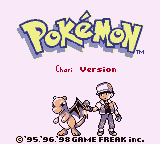
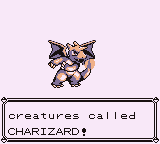

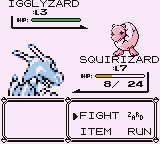
The wittiest of the minimalists, however, was Coeurdhiver, who created as a polemic the twin versions of Pokémon Zard & Chari (December 2019), which, read backwards, are read “Charizard”. A sort of polemic against self-indulgence and recycling of ideas in the franchise and in traditional hacks, this hack replaced all Pokémon with mutations of Charmender.
Josephine Lithius
A controversy of a very different nature was instead that opted by ROM Hacker Josephine Lithius, the first proven female ROM Hacker (and professional ROM Hack critic) to have published a completed restyle of Gen.1 with Pokémon Satin (January 2016), a graphic restyle that replaced the protagonist with the girl trainer depicted in Ken Sugimori’s drawings as the hypothetical female protagonist of Pokémon Red and Blue. Taking up the male, chauvinist, and paternalistic tradition of ROM hacks with female protagonists, Josephine Lithius contributed to criticizing the idea according to which Hack ROMs with female protagonists were only for “fathers who play Pokémon with their daughters”. With this hack the author contributed to reviving the dialogue and debate on rampant authoritarianism and sexism in an era in which the two things seemed to have elected these disasters to the top of power (in reality, these had lost the popular elections by the numbers), a fact which made her first of all an extremely competent critic on the subject of Hack ROMs and which above all demonstrated that real or presumed programming skills have almost nothing to do with the artistic intentions of ROM Hacking, unlike what many of the hyper-masculine “best hackers of all time” leading packs of alpha wolves had hoped for from the beginning.
● Canonical Orthodoxy and Gain of Function
Danny-E 33

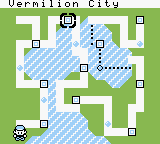
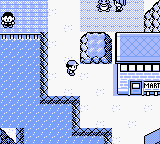
Of a completely different idea, Danny-E 33 offered his uncompromising manifesto of complete traditional restyle with added functionalities. Born under these auspices, his Pokémon Prototype (May 2012-2015) tried to demonstrate the central importance of programming as an end in itself with additions such as the involution of Pokémon, in a hack that was essentially an automated redesign of the original game with some text elements from the first Pokémon movie. Ultimately, functions aside, it was a technical hack that did not add anything significant in itself to the ROM Hacking landscape, essentially anticipating the premises of Pokémon Crystal Clear.
Serhatisb


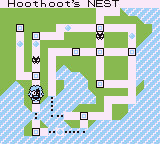
Inspired by 80C’s Pokémon Pink, Koolboyman, and especially by Mateo’s Pokémon Red++, Serhatisb collaborated with Mateo to create Pokémon Chroma, a disassembled hack of Pokémon Red intended to create a spin-off centered around Eevee and its mysterious evolution. The hack was notable for being one of the few at the time to add new Pokémon beyond 151 (for a total of 26). Following the example set by Koolboyman, Red Cabusao, ShantyTown, and the contemporary Ebernacher90, it was supposed to include over 255 species, reaching a hypothetical total of 352, although it stopped at 177 in the final released version, Alpha 2.5. The hack also added gender selection and other futuristic features. Unfortunately, the rest of the game remained identical to the original, with no changes to the maps or story, at least in the final version released. In fact, the hack was abandoned shortly thereafter. Later, after suggesting a Pokémon Pinball hack, Serhatisb mysteriously disappeared from the scene in early 2018.
LongLostSoul


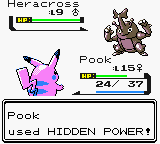
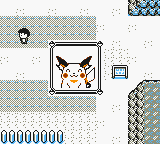
Also attributable to this undercurrent was an obscure and very unknown author such as LongLostSoul, who, despite the public declarations of dozens of amateur authors, was destined to be the true spiritual heir of Danny-E 33, and (not coincidentally) was also the only author of GB\C hacks of this sub-genre whose results stood out more than those of the other pretenders to the throne of conservative “gain of function” hacks. Moving immediately to the disassembled version of Pokémon Yellow just created at the time, he created the second disassembled hack of Pokémon Yellow ever, namely the functional update of Pokémon Evo Yellow (November 2016-December 2022), a disassembled hack with a long gestation that would see its first publication only during the Pandemic. Unlike its reactionary counterparts, the hack “dared” to add features previously introduced in other more popular international hacks, including the physical-special split, additional Pokémon from Gen.2, held items, and gender selection (the first Pokémon Yellow hack to introduce this type of change). Furthermore, the hack also added some new features, the most innovative of which was the multiple Shiny forms. But alas, as per the engineering dogma inherited from the GB\C circles on reactionary social networks of the time such as Discord, the rest of the game remained almost identical to the original.

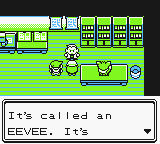

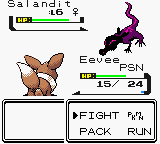
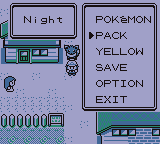
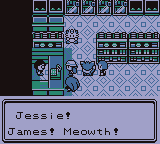
Following the creation of the latest version (v3.9), LongLostSoul also created two additional spin-offs: the first was Pokémon Evo Brown (June 2022), that is, the same hack but with Eevee as the starter instead of Pikachu, and finally Pokémon Evo Meowth (June 2022), a partially unfinished spin-off that, unlike the previous ones, also emphasized a component more akin to the Rocket genre than to that of the traditional restyle. Having suffered dozens of serious errors due to personal and computer issues, LongLostSoul abandoned the project.
Unlike fellow ROM hackers who stuck to the traditional philosophy of adding features, LongLostSoul has increasingly moved away from "purist" ROM hacking over the years, eventually experimenting with the insertion of new events and story elements, thus ending up resembling more the assimilating and innovating US ROM hackers than the purist US ROM hackers who wanted above all to keep their distance (if not to belittle) the diasporic experiences. On a purely functional level, together with Steppo Blazer, LongLostSoul was perhaps the most visionary author in terms of modifying Pokémon Yellow.
Shockslayer




United all these programmatic experiences in a single opus magnus that summarized the entire traditionalistic experience thus achieved, the disassembled leviathan of the genre that best embodied the results achieved and which became for some time, consequently, the most popular GB\C Hack ROM of all times was therefore Pokémon Crystal Clear (December 2020) by Shockslayer, the hack that essentially transformed retro ROM Hacking into an authentic mass misdirection. By leveraging the hardest, most relentless, and technical conservatism, Shockslayer had the brilliant intuition of simply offering the same original starting game but adding in measured doses the most popular components of the eminent hacks that had preceded it, effectively becoming the most famous (and hypocritical) machine-automated costume change in History.
More a product of more accessible advertising and the inertia of a bored audience that wanted to play hack ROMs but actually hated hack ROMs — i.e. the same audience of hacks such as Pokémon Epic Gold — Shockslayer combined that target with more pragmatic manufacturing and technocracy as possible, drawing from a mix of those traditions begun under the auspices of the works of historical conservators such as Danny-E 33 (the technical restyle with the addition of novelties without distorting the original game) and Rangi (the methodical correction of errors, the Disassembly of Pokémon Crystal). Adding a pinch of the most harmless (and influential) of Pokémon Prism’s innovations, namely the character’s costume change, Shockslayer essentially achieved the public masterpiece exactly as GameFreak before him achieved yet another “masterpiece” of the moment every 4-5 years (with trails of martyrs along the way), that is, by rearranging the chairs on the deck of the Titanic which was the Pokémon franchise. The real secret of the success, however, was perhaps the good nature of the author, who, unlike his masters who preceded him, had learned not to alienate his audiences, giving them exactly the type of hack that they were clamoring for, eventually and consequently becoming even more famous than Pokémon Prism itself — despite the clear prevalence of déjà-vu.
Although an enjoyable, accessible, and genuinely stimulating hack, the real merits of Pokémon Crystal Clear were however inflated by the more advertising fringe of its audience, who did not realize that it essentially did not add anything profound either to the History of ROM Hacking or to the cultural and artistic baggage of the players.
● Purist Traditionalism in Synthesis
The main underlying limitation of the most hardcore followers of the conservative U.S. movement, and the main source of the mediocrity of much of that scene itself, was the idea that there were only a few “right ways” to do ROM Hacking.
Actually — as stated on several occasions both by highly respected “progressive” hackers (such as Miksy91 or Mateo), as well as by avant-gardists, jesters, disastrous and weird hackers, and even by several traditionalist hackers themselves – there is no real “right” method for hacking ROMs, just as there are no true “standards of seriousness” or methods that are more correct than others or intentions that are more “original and creative” than others: all methods and underlying stylistic intentions in ROM Hacking are equally valid.
Furthermore, there are no real “errors”: the error exists when a result is found that is not desirable compared to what was desired, by an author or by an audience or by both, and in any case the error also serves to remember what has been learned, as well as to what was done wrong. Some errors are the result of learning attempts during the development phase. The only real mistake is precisely that of thinking that this is not the case and that some stylistic conventions or immutable orthodoxies are necessarily the only valid ones: this type of model (“purist” or presumed such) does not consider the process of evolution and adaptation that is instead found everywhere in the universe and in the world.
Likely, given the extreme passion for technicality, the movement simply ended up confusing variable and individual software with the immutable and common hardware that processes it. The impossibility of reconciling these two components harmoniously is the same type of contemporary impossibility of reconciling relativity with quantum mechanics.
3.11 The U.S.A. after the Diaspora: the progressives, 2010-2020
In addition to those who in this period took refuge behind the traditions of the official games without undermining the pillars on which the entire aesthetic of the franchise had been built, in the United States there were also those who did not want to be told what GB\C ROM Hacking and hacked games necessarily had to be, opting instead to seek more original forms of expression, therefore choosing to take less traveled roads — or even paving their own roads. Inspired by the futuristic hacks of their own background and intrigued by overseas experiments, the second generation of “progressive” US (and UK) hackers chose to pursue not the rules but their own dreams. The model ROM Hacker was after expression, not the conventions: if there were any, they were mostly a way of metaphorically reflecting on the History of the Pokémon games or on the History of ROM Hacking itself.
Consequently, the experiences produced in the second decade by this second generation ranged across the most disparate spaces and results and, despite often being the most ignored by the public, these authors proved to be among the most influential and significant (and, in many cases, also extremely virtuous from a programming point of view). However, most of them had a numerically small creative output, as their production was focused more on very deep and detailed single projects, resulting in a less prolific output. However, at least in this case, the lack of quantity was compensated with high quality.
Also contributing to the phenomenon was a group of enthusiasts who were more interested in this type of hacks and not necessarily in the most popular or easiest to understand ones: for the first time in the History of GB\C ROM Hacking, a segment of authors and the public was converging towards an aspect that was inherently more “artistic” than purely videogaming or technical.
The true progenitor of this second generation of ROM Hackers was Mateo: the re-foundation of Twilight Hacking under the name Skeetendo in 2009 meant the creation of a new community of passionate young hackers gathered around the most bizarre and stimulating hacks of the period. When Pokémon Prism was released the following year in its famous 2010 demo, rather than becoming discouraged and regressing towards more traditional forms of hacking, this new generation took advantage of it to experiment with new approaches and styles, deviating more and more from the basic model that had been offered by the Pokémon games. Even more so, once that community became internationalized, enterprising hackers (e.g., Miksy91), avant-garde hackers (e.g., Red Cabusao), synthesist hackers (e.g., Chamber, G0ld), or crazy hackers (e.g., 80C) gave new impetus to this community which, unlike their “purist” and traditionalist colleagues, quickly absorbed the innovations offered by all these experiences, consequently re-transforming and reinvigorating US GB\C ROM Hacking itself. To crown the feat, almost as a prophetic sign, in 2016 the definitive version of Pokémon Prism demonstrated that it had itself integrated some of the features that had emerged from these national scenes, “validating” the process of mutual integration that had occurred in the meantime.
After then, talking about “national scenes” will make very little sense, given that these approaches (and collaborations) to ROM Hacking were cleared at an international level.
● The Second Generation of Anglophone Avant-gardists: the Binaries
Melash
At least one of Mateo’s collaborators anticipated exactly these trends that would emerge in the years to come. Melash (originally from Idaho) was the first of the English-speaking hackers halfway between the two generations to show the signs of integration and synthesis that would characterize the “alternative” GB\C hacks of the near future.



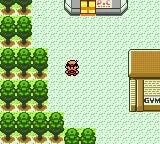


If the debut work, the very ambitious adaptation of Pokémon Emerald in Gen.2 hoped for by Pokémon Ancient Emerald (November 2009, unpublished) was an extension of the cross-platform adaptation experiences experimented by Mateo and his Pokémon Secrets & Rumors (and, before them, from the MB Hacks of Pokémon the Johto Journeys), his subsequent work was instead a transfiguration of what the average English-speaking Gen.2 ROM Hacking had been up to that point: in fact, Pokémon Chrome (February 2012-April 2013) was a perfect synthesis between Pokémon Prism, Gen.3 hacks, Miksy91’s high-level scripting hacks, and the more scripted and more exotic Philippine hacks.

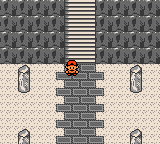
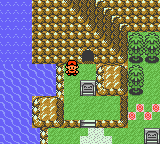
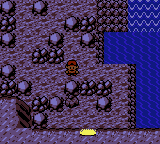
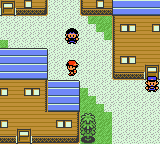
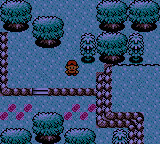
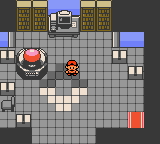
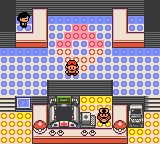
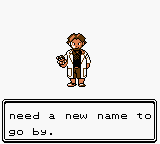
The hack, which adapts Gen.3 tilesets on markedly Prism-ian exteriors, beyond the functions and aesthetics also adopted a subtext of active and sagacious dialogue between characters à la Dark Future which made the hack more human and less robotic, unlike of its competitive and purist counterparts. The rediscovery of the protagonist’s voice, of the depth of the characters, of the ideas, as well as the arcane theme and surreal scenario of the intro, albeit in their incompleteness, would have anticipated many of the major hacks of the decade, and suggest that the author was much more than a simple amanuensis of the ASM and of the modifications of data tables for its own sake — as only Koolboyman, Miksy91, and Red Cabusao were able to do before him.
Melash had also dedicated himself to many other various hacks and projects, although these two were the only ones that reached the memories (and images) and only the last of the two was released in a playable demo.
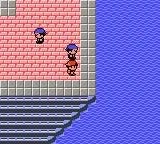

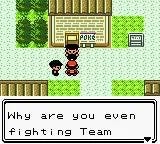

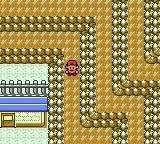
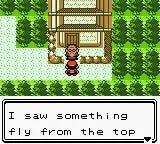
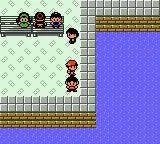
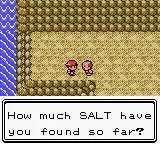
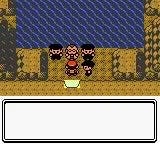
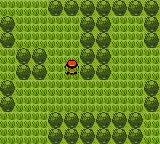


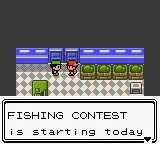
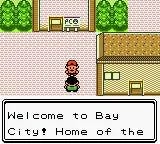
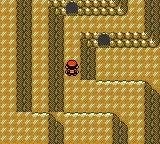
The most notable of his unreleased projects was Pokémon Awakened Legends (June-September 2008), an overhaul hack set in a new region, heavily inspired by Pokémon Plasma Red, the original Pokémon Prism, and the contemporary Pokémon Team Rocket Edition. The hack, which featured advanced ASM, original tilesetting, pioneering scripting, and a unique genre fusion, had excellent promise for its time and was nearly halfway completed, but was abandoned by Melash to focus more on his two major projects, which also unfortunately remained unfinished.
Tombstoner
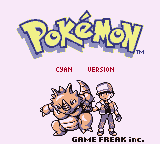


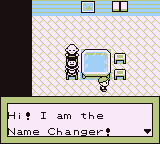
Of a completely different nature but no less skilled was one of the most bizarre and picturesque ROM Hackers of Gen.1, namely Tombstoner, also known as Sherkel. His anti-virtuoso, zany and, above all, postmodernist hacking nevertheless resulted in some of the most profound stylistic innovations. His Pokémon Cyan (January-June 2011) was not only the most successful surrealist joke of his generation but was above all a pioneering study in purely visual comedy. Almost completely abandoning the presumed standards of seriousness of the implementation of ROM Hacking, this veteran of Glitch City Labs, accustomed to the bizarre since always, simply pushed the level of tilesetting beyond its macaronic limits, creating minisprites of NPCs that were authentic jokes (either still or moving), giant smileys omnipresent in the external maps (the smiley became the recurring symbol of the hack), as well as far-fetched dialogues and a clever reversal of game roles that would make Vida Translations embarrassed (the protagonist challenges the professor, while the nameable rival assumes the role of arbiter of the situation). The deliberately disastrous and bizarre blasphemous mapping confirmed the stature of the programmatic intentions of this maudit of the avant-garde joke.
Tombstoner was also a pioneer of his times and openly experimented with ASM, creating an NPC that removes and renames the player – the first NPC event with new ASM created from scratch in Gen.1. Tombstoner’s greatest innovation, however, was perhaps the invention of occult, comic, or dreamlike meanings that existed on a purely visual level, whether it was mapping or tilesetting, which would later be taken up, expanded, and even extended to Pokémon teams in Pokémon Grape. Although similar visual occult references had existed since the original Gen.2 games (the Goldenrod gym, the three colorful bikers of Kanto, etc.), here they took on not so much the role of trivia as previously but that of a fifth dimension of gaming.
Cheesetendo

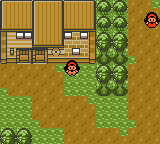

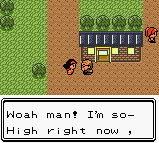
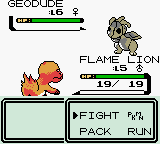

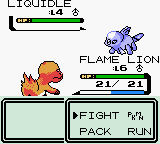
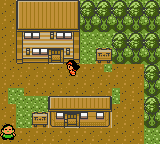
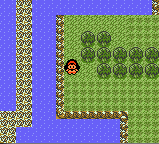
A further pioneer who was extremely overlooked throughout its existence was Cheesetendo, who with his Pokémon Floral (March 2011-May 2013) contributed to anticipating the idea of a game that did not offer the usual trivial standards such as gyms and the classic déjà-vu of world of Pokémon. The hack, with a female protagonist, took place according to the model of what would become sidequests (slightly anticipating Pokémon Dark Energy), and was more similar in inspiration to the German hacks full of Fakemon than to the costume changes of its contemporaries in extreme vogue. In addition to the exotic, detailed and suggestive tilesetting, this hack was the first to act as an ideal bridge between the generation of hacks of the previous decade and the Prism-inspired Anglophone hacks of the time. Unfortunately, Cheesetendo ran into several gameplay errors and abandoned the unreleased project, but not before sharing a copy with 80C and Miksy91 so they could preserve its memory for posterity.
● The Second Generation of Anglophone Avant-gardists: the Disassemblers
ShantyTown
However, the most significant debut of this period and the most consequential event of the decade came from one of the most unknown and creative U.S. hackers ever — undoubtedly the most creative and innovative along with Koolboyman.
ShantyTown perfectly represented that generation of amateur ROM Hackers who, inspired by the great masterpieces of the period, approached that world with the intention of understanding its deepest secrets. Having early dedicated himself to ASM and every possible existing tutorial in circulation and having discovered the first operational version of the Pokémon Red disassembler, within just a year this newbie managed to qualify himself among the most creative peaks of the entire ROM Hacking — and not only of Pokémon.
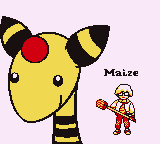


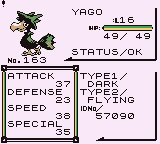
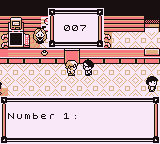

Started in binary and then quickly remade from scratch using the most modern means available at the time, Pokémon Maize (April 2013-2015) became the greatest masterpiece of first-generation ROM Hacking, although it was never completed. Even in its current stage, this became the most futuristic hack ever made of its generation (i.e., Gen.1), second only to the Midnight Hack in terms of anticipation and profound innovation. In addition to having made all the possible and imaginable modifications in all the possible branches of ROM Hacking, including on a musical level, ShantyTown delighted not only in re-adapting all the most popular features present in the games of subsequent generations, but enjoyed unhinging each of the stereotypes associated with what an RPG should be.
In addition to having assimilated all the innovations of other innovators of his contemporaries (running shoes, multiple Pokémon minisprites, new evolution methods, new items, etc.) and having finally demonstrated to even the most skeptical of traditionalists and purists not only that the practice is legitimate but has always existed since the dawn of ROM Hacking (even as practiced by the supposed gods of the Olympus of GB\C Hacking, even the most orthodox ones), ShantyTown created some of the most radical aesthetics ever conceived, of which the most radical of all was certainly the system of procedural maps (de facto inventing aleatory mapping), and it was above all a tribute not so much to ROM Hacking but to the world of Homebrewing which was born from ROM Hacking itself, actually confirming its vocation of a professional videogame producer rather than that of the average punk teenager who wants to make a ROM hack with all the Pokémon and all the regions as a debut hack. Also due to this last reason, ShantyTown deliberately chose to stick to the 190 Pokémon and the single region, not because he couldn’t do it but simply because he wasn’t interested: in reality, one of the very first ROM Hackers to have expanded the PokéDex beyond the number 255 was actually him, in the case of Gen.1 – in the case of Gen.2, the very first hacker to expand the PokéDex beyond 255 was Red Cabusao (in the same period), although, to be completely honest, the first to theorize hacks beyond the #255 was Koolboyman, who suggested using an unused bit of Pokémon stats (the top byte of the level) to allow for more Pokémon to be allocated to the game.
Furthermore, the extreme underlying technicality — such as to shame even the most “original” and elitist “purist” hackers of the period — was largely compensated by a clever use of dialogues and humor, perhaps also as a secondary effect of the hack on which he actively collaborated and contributed enormously to, namely Pokémon Grape. All of this contributed to creating a synthetic and good-natured, avant-garde, and revolutionary work of art and engineering masterpiece, which however also retained a touch of panache that made it clearly deviate from all those serious Pokémon games that would become increasingly boring over the years, impersonal and canonical bordering on the display of family-sized mannequins — ROM hacks included.
Unfortunately, the project was interrupted in 2019 when ShantyTown, having moved on to different types of projects, realized that any work still to be done on this hack was too burdensome and proving, as he did not have enough time to dedicate to it. Even though ShantyTown left the hack, the hack ensured that ShantyTown did not leave History.

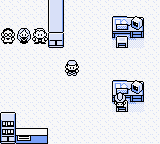
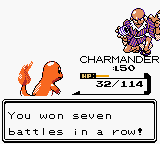
In the meantime, ShantyTown completed and published at least one of the classics of GB\C Hacking History, namely Pokémon Battle Factory (2014-January 2015), the definitive masterpiece of the competitive genre. Demonstrating to the world that to be competitive it is not enough to just recycle yet another outdated game raising the levels of the opponents, he instead created a mini-hack that actually offered a potentially unlimited gaming experience in the name of the key element of the competitive genre: fights between collectible chickens, but with the addition of rules and provisions such as to make the operation unpredictable and customizable, the exact opposite of the Kaizo hacks that would soon end up swallowing up the world of “competitive” hacks (and the rest of the world of Pokémon ROM Hacking itself). A final patch called Pokémon Thief Red, according to the intentions hoped for by PokéGlitch for its contemporary remake of Pokémon Team Rocket Edition, gave players the possibility of stealing opposing Pokémon without GameShark.
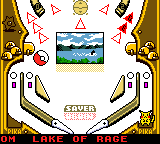
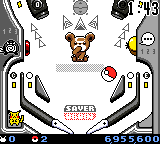


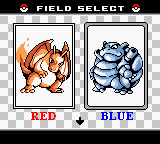
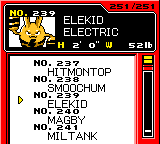
Finally, ShantyTown closed his GB\C career with a hack of a spin-off (one of the first ones), the first overhaul based on Pokémon Pinball, namely Pokémon Pinball Generations (January 2019), a hack that confirmed the author’s predisposition with experimentation and wanting to explore new paths every time.
Although he was the most gifted ROM Hacker of his generation and had delivered to the world at least one of the most futuristic hacks ever, decades ahead of the rest of the entire Pokémon ROM Hacking, ShantyTown was essentially ignored entirely by both publications and the most popular of lists, and almost nothing was written about him except by his fans. For at least a decade, Pokémon Brown, despite the contemporary updates, essentially remained the favorite of the ocean-sized Gen.1 chat audience and was the only Gen.1 hack that was talked about positively in the tabloids by millions of viewers when it should have occurred for Pokémon Maize, too: as per the official meritocratic theory of the oldest author of the San Francisco Bay (i.e. Koolboyman), this should have been the “innovative hack that distances itself from the public” that ROM Hacking GB\C would have needed, and yet this was not the case, thus reducing the telltale speech to yet another advertisement best fitting his audience. Along with Midnight Team’s Pokémon Midnight Hack, ShantyTown’s Pokémon Maize is the best GB\C hack ever created to date.
CoralDev
The perfect synthesis between the most radical past experiences, the trends of the present and the leaps into the future, as well as that of the all-round ROM Hacker was well represented for Gen.2 on behalf of the author known as CoralDev, whose cornerstone and flagship project was Pokémon Coral (November 2017-2022), a disassembled hack of Pokémon Crystal which developed not only a perfect assimilation between the history of GBC (and GBA) hacking but also the development of all those theoretical ideas advocated by more disparate environments than “secluded” forums and chats.

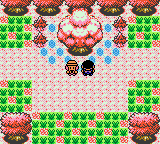
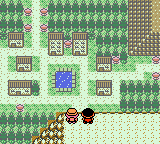



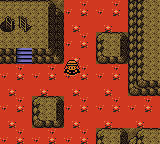
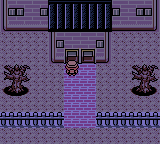

Perfectly synthesizing the key experiences of experimental U.S. GB\C ROM Hacking (Koolboyman, Mateo, PiaCarrot) as well as of the most disparate parts of the world, both English-speaking (e.g. Freako) and non-English-speaking (Red Cabusao, Miksy91, 80C, G0ld, etc.), CoralDev took advantage of the competence and technical innovation of the former together with the competence and stylistic innovation of the latter, creating a Hack ROM not only from the functionality (descended from Prism, Maize, Grape, Orange, Dark Energy, and so on) but from the mood modern – the “humanistic” dialogues and romance between characters in Dark Energy, the unusual events such as the Shiny Pokémon “event” from Haiiro, the occasional nonsense and postmodern subtexts from Grape, the attention to graphics and the interplay on colors from Ice Silver and Naturia, and so on. Added to this were also unusual features coming from GBA Hacks and fourth generation games, taking inspiration from both famous examples (e.g. Surfing on the lava from Pokémon Snakewood of Gen.3, the haunted house with Spiritomb from GBA hacks, etc.) and from the most unknown and least appreciated hacks (the movements of NPCs in reverse direction from Haiiro, the rideable Doduo sketched in 2013 by the first Gen.1 Hacking attempts of the Philippine community, etc.).
To all this was also added a strong sense of hacking on a musical level, perhaps one of the best of the time, which before then had been embodied in its most experimental vein only by US and British GB hacking hermits such as AshAndMisty and Hat.
However, to this postmodernist subtext that reflects on the History of ROM Hacking of Pokémon itself, very original components were also added that had previously only been openly speculated on or just sketched out either from the original games or from old unfinished hacks: above all, the most important were first of all the concept of “Rally Hack” (i.e. the racing component that takes over) which was previously only sketched in the cycle path of Pokémon Ruby and Sapphire (and, to a lesser and very marginal extent, from the sketch of Philippine hacks with “bike Doduo”, as well as by the Italian hacks of the “crazy” juncture well represented by the infamous Kart from Pokémon Grape and the vehicles of Plaguemon), as well as by the extension on the studies of perspective (whose only concrete example at the time it was Demo 3.1 of Pokémon Grape, precisely in the Fish Factory map of the second floor where the player can glimpse the lower floor of the map shrunken by the height) which had previously only been sketched in the aforementioned Pokémon Ruby and Sapphire (in the port construction site) albeit in an extremely approximate manner. These components were instead significantly expanded in Pokémon Coral, thus making possible both maps with timed races and maps with a detailed and truthful use of perspective with distortion of the map (from above), justified and expanded by the immense panorama. Part of the suggestion also derived (and above all) from totally ignored original games such as Pokémon Trading Card Game 2 (as in the case of the detailed animated waterfalls). In addition to this, and perhaps more importantly than previously reported, the hack almost exclusively discarded the urban and metropolitan setting of its peers, opting instead for the grandiloquence of the mountainous and natural environment of the Onwa region in which plays the game (the real highlight of the hack), which conveys that aspect of a sanctuary of large spaces and nature that can only be felt in the Rocky Mountains, which had never been fully appreciated in the pixelated and cube-like claustrophobia of Pokémon.
With several playable versions published between 2021 and 2022, this hack proved to be one of the most appreciated by the public, perhaps also thanks to the original setting accompanied by all those subtexts familiar to fans of the world, traditional or apocryphal, of collectible monsters. In any case, thanks to its impact and functionality innovations, Pokémon Coral qualifies itself as one of the best hacks ever created and as the spiritual heir to Pokémon Maize.
● Creative Port-Over
Bloodless

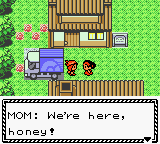
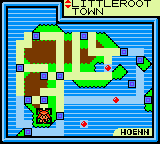
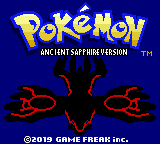

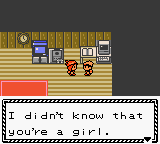



The vertical integration of the most futuristic experiences of ROM Hacking in the USA and abroad, in this case the Philippines, was essentially confirmed when Bloodless, taking up from Melash and Red Cabusao, decided to complete their respective works of total radical adaptation, filling the gap with his Pokémon Ancient Ruby & Ancient Sapphire (February 2019), which explicitly took up the unpublished Melash project but updated it at the time of the disassembly of Crystal as prophesized by the advent of this second generation of enterprising authors. Extremely accurate and philological compared to its predecessors, unlike them this attempt, at least in its first publication, did not offer a spriting comparable to that demonstrated by its two ancestors and did not demonstrate personal creative freedom in the approach to adaptation, confirming Bloodless as an extremely talented engineer of videogame genetics rather than as a pointillist painter of the art of the third millennium who transfigures History and reality according to his sensitivity. Nonetheless, the adaptation project ranks among the most successful ever carried out.
Azure Keys
Even better, Azure Keys also took the path of the port-over genre but, unlike most of his contemporaries, he chose the more tortuous path of creative and open adaptation. Initially a follower of the US traditionalist movement, Azure Keys debuted in 2018 with two negligible automated restyles which, as per dogma, replaced the Pokémon from the original games without however changing the rest of the original games at all — namely Pokémon Unova Red (September 2018) and Pokémon Kalos Crystal (December 2018-April 2019), two déja-vù hacks which however gave a glimpse of the author’s passion for the adaptation genre.
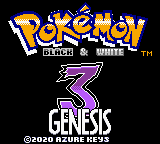


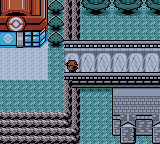
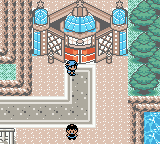
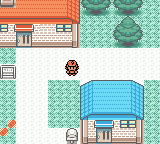
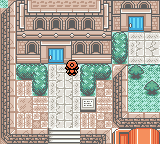
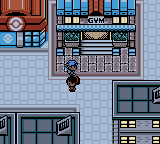
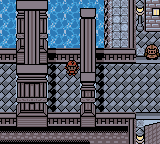
Freed from the shackles of traditionalism, Azure Keys redeemed himself with a port-over hack entirely in the name of creative tilesetting, namely the unnamed hack Pokémon Untitled Unova (June-December 2019), a hack that would have anticipated future attempts to adapt the Gen.5 games in Gen.2 and which would later be started from scratch with much more modern means, transforming into one of the greatest masterpieces of the adaptation genre (if not the best), i.e. Pokémon Black & White 3: Genesis (January 2021-2023), a hack that not only pushed tilesetting to the highest levels in Gen.2 hacks, making use of the improvements previously introduced by PiaCarrot and team, but which above all offered a completely new adventure vaguely inspired by the games it intended to adapt, almost a sort of apocryphal author’s prequel. Beyond the aesthetic and technical virtuosity, Azure Keys was demonstrating to the world that to make adaptations it is not enough to simply copy the original games by creating a sloppy reduction tailored to the platform, but it is also possible to create adaptations that are even better than the games that they intend to re-adapt. In this sense, the author demonstrated that he had not only inherited but even surpassed the lessons previously offered by the visionaries of creative adaptation — such as Mateo, Melash, and Red Cabusao — and that he had brought to the logical conclusion the path outlined and opened by MB Hacks at the beginning of the millennium with that humble but at the same time enlightening Pokémon The Johto Journeys.
● Overhauls between Graphical Fantasy and Polystylism
Lilbluedemon

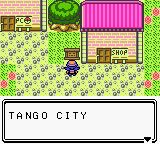

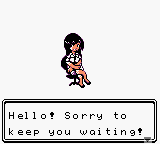

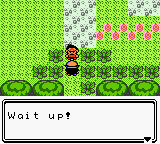
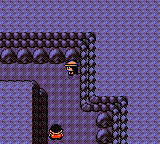
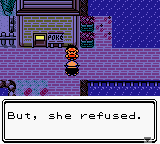
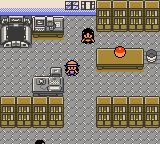
In the meantime, without almost anyone wanting to notice, British ROM hacker Lilbluedemon, already a veteran of past experiences in Gen.3 ROM hacking, became the first female ROM hacker in History to have created a GBC overhaul hack with Pokémon Paradise Green (2016-June 2017), an unpublished hack with great ambitions and notable premises. Started as a hack of Pokémon Ruby in 2008, and temporarily sketched in 2010 with the title Pokémon Black Crystal (from which this hack inherits several elements), this hack was finally reworked and re-released in GBC format.
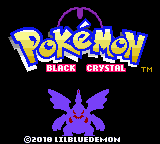


In addition to the revival of elements of lesser-known GBC hacks (such as Pokémon Sterling Silver and Pokémon Haiiro) and the introduction of crossover elements (mostly graphic elements from Zelda Link’s Awakening), the hack stood out for its extremely well edited and for the introduction of elements of unusual sensuality (such as the female Pokémon Professor in an ambiguous pose and in visible embarrassment in the introduction, an authentic heresy compared to the atomized and depersonalized pro-Nintendo videogame canon), as well as components linked to the emotional sphere linked to the female protagonist of the game, such as for example the rejection of the rival’s advances which triggers the story. The accentuation of these “female” components, from the spriting to the story, which tend to be overlooked (and sometimes even derided or stigmatized) and far from the dictates and conformist pressures of the time, demonstrate first of all Lilbluedemon’s desire to establish herself first and foremost as an author of ROM Hack for personal taste, without necessarily following the pre-established canons or the dictates that “do honor” to one kind of hack rather than another, instead following the path of instinct and the spirit of exploration which was all too often lacking in the entire U.S. scene (and not for gender issues: the most conservative ROM hackers are men).
Lilbluedemon demonstrated that the aesthetics and themes offered in artistic events can transcend geography, gender, official discourse, and marketing, demonstrating first of all how youth counterculture can also be a key to universal communication through which it is possible to express oneself instead of the self-image that everyone else demands, achieving the exchange and circulation of ideas and experiences beyond barriers and prejudices. Instead of doing the traditional restyle from a feminine perspective (official games with female protagonists, a now obsolete concept) or doing the neotraditional overhaul from a male perspective (new games according to the mood and “serious” premises of the original games, a now obsolete concept), the author has instead been able to offer an overhaul with her own personal perspective and style, free from contemporary constraints and characterized above all by original graphic, stylistic, mood and content ideas – and, above all, without disdaining hints at the joys and sorrows of authentic human experience.
PiaCarrot
However, the most successful and critical hack of this current was also the one that was completed first compared to the others, namely Pokémon Orange (July 2017-July 2022) by PiaCarrot. Fresh from group experiences with Mateo in the last days of Skeetendo Inc., the author put to good use his many years of experience as a forum organizer (i.e., that of Pokémon Hackers Online, now defunct) exposed to hundreds of experiences in a mega-production that was the finalization of all the functional experiments carried out on the Gen.2 Disassembly, thus making the Hack ROM the GBC equivalent of the Manhattan Project.
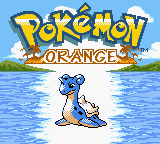


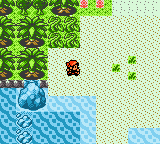
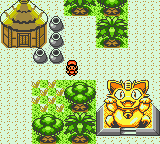
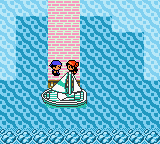
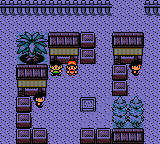
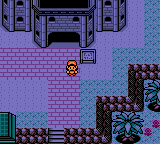

Used as an opportunity to exploit innovative GBA lineage systems such as rotation on the X and Y plane of the tiles (making it possible to create extremely extensive and varied tilesets), the implementation of the most popular features inspired by the original games as well as by key hacks of all GB\C ROM Hacking experiences around the world, this hack operated precisely that kind of perfect synthesis between innovation and renewal of the meanwhile established tradition that was able to relaunch (inter)national Gen.2 ROM Hacking.
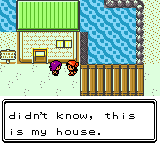
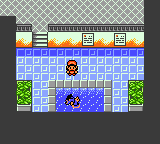

Having achieved this masterpiece, among the greatest ever created of all time, a dilemma arose: what had been an innovation, and which had been developed in this project was now elected as a new tradition. In fact, the hack itself never questioned the true founding values of the Pokémon games as previously done by its predecessors — in particular, as done by the ancestor of this hack, namely Dtyler’s Pokémon Orange Islands Adventures, which instead was built when no tradition existed at all, but rather created it practically from scratch without there being any examples prior to the time (possibly even influencing the official Pokémon games, as one might suspect). Rather than undermine these now consolidated purposes and aesthetics, PiaCarrot essentially decided instead to dedicate himself to technical in-depth analysis, updating the masterpiece to the era of high specialized engineering with its own update and spiritual sidequel, Pokémon Orange Island Walker (2023).
Finally, in the new decade, right in the years of the revival of the port-over genre, PiaCarrot’s return to the canons of the official games was confirmed with an ambitious and fairly open adaptation project of the Gen.4 games in Gen.2, Pokémon Ancient Platinum (March 2021, unreleased) (not to be confused with the homonymous and unreleased Korean GBC hack by Onis), a project initially conceived between 2010 and 2011 at the time of the Skeetendo Inc. collective and the group’s large-scale port-over projects (i.e. Pokémon Secrets and Rumours by Mateo and Pokémon Ancient Emerald by Melash). The relaunch of the old project occurred mainly both out of nostalgia for the never-realized project and due to the influence exerted by Bloodless, thus leading to the launch of a new hyper-functional hack that, through the “16-bit list system” developed for the disassembly of Pokémon Crystal, could add an infinite number of Pokémon (as much as 411), as well as offering all the latest technical features of the most popular subsequent games in the context of a retro reunion in Sinnoh, viz the region of the Gen.4 Pokémon games. Always torn between innovation and tradition, PiaCarrot lastly resigned himself to relegating innovation to the point of view of programming, and in his maturity he almost seemed willful to abjure those innovative components of the stylistic and attitudinal plan that instead emerged in his early works.
In this sense, unlike those who made similar comparisons in a careless manner, PiaCarrot as a progressive author was much more like the pragmatic and programmatic Koolboyman of the crystallized and disassembled Pokémon Prism of 2017 than to the frontier pioneer Coolboyman of his extremely experimental and tradition-less “workshop” hacks from ten years earlier (from which the first gilded version of Prism of 2007 eventually emerged). In fact, PiaCarrot was more of an innovator of the continuous and incremental quality rather than of revolutionary and out-of-the-box quality: on the other hand, his experience in ROM Hacking and in communities was conducted within rather than outside of them.
● Mystical Hermeticism
Wolfboyft
In contrast to this entire generation, there was one of the most (truly) innovative ROM Hackers of this generation, namely Wolfboyft, a British ROM hacker (from London), who was also the least known, least publicized, and least successful compared to the real or presumed giants of English-speaking progressive ROM Hacking, the latter in turn giants compared to the “regressive” ROM Hacking of their purist, rebalancing, traditionalist, and assorted reactionary colleagues. A true avant-garde pioneer and a sort of outsider, he also represented the antithesis of that “art” which was more form than substance and more equipment and presentation than experience, purposely choosing to give up graphic elegance in favor of epistemological richness.


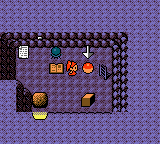

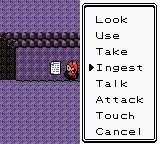

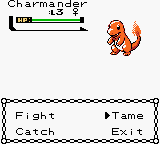
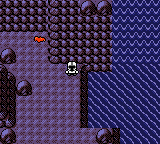
His greatest masterpiece, and one of the greatest masterpieces of GB\C ROM Hacking despite appearances, Pokémon Stygian (December 2015) was a total departure from the classic concept of Pokémon that had been done up to that point, even going further than dared by the founding fathers of avant-garde ROM Hacking such as Philip Reuben or MeanMrMustard (i.e., those of World Famous Talking Cactus and various sequels). Anticipating by almost ten years the idea of fusion with the dungeon crawler genre (which would only be experimented in the case of GBA Hacks, the first example of which was the pioneering Pokémon Odyssey cross-over by Team Echoes in 2022-23), that of Wolfboyft was not so much ROM Hacking as ROM Hacking’s excuse to instead offer his personal vision of what avantgarde hacking actually meant in the age of disassembly.
Instead of recycling the medium for the most trivial of gimmicks and rearrangements and unseemly additions of decoration as the rest of ROM Hacking would soon do once the disassembly was in hand, Wolfboyft was practically the only one to follow the example of what disassembly meant as proposed by Sawakita (and also anticipating what was proposed by Hikikomori): distorting the mechanics if not the gaming experience itself. Wolfboyft was one of the very few who understood that ROM Hacking is also an opportunity and pretext to offer and concretely realize an aesthetic and an idea that is not necessarily the same recycling that had been offered by the franchise since its origins. Rather than create the perfect sequel to the masterpieces that came before it, he distanced himself from the rest of ROM Hacking. Unlike Miksy91 and 80C, who distanced themselves from the mood and the “intellectual” and “subconscious” purposes of the games by using themselves as a pretext, Wolfboyft also eliminated the pretext itself from the scenario, leaving only the most visual and nominal reference more as a tribute rather than as a necessity.
The hack essentially distorted the original game, creating a separate game that was more like other RPGs such as Wizardry or dungeon crawlers themselves than to simple Pokémon games, first introducing interaction with the environment and surrounding objects as a primary objective rather than winning fights and collecting monsters — which were useful but certainly not the primary focus. Added to this was also a gothic and claustrophobic component which foreshadowed the future of the algorithmic and fratricidal era which was looming at the time and which would only be fully grasped in the following decade, creating a disheartening hack with an apocalyptic appearance, paranoid, liminal, and even bloody — bordering on splatter if it weren’t for the fact that the zombies in the game have green blood.
A true leap into the void of existence, or alternatively a leapt existential void, Pokémon Stygian represented the video-ludic and hackological transposition of the dialogue and chess game between the medieval errant knight and the Death Reaper, a reference to the precariousness of youthful existence in the era of false successes and false hopes and existential gratification to the exclusion of reproaches, a reference to the infinite but narrow range of possible choices on what can be touched, looked at, ingested, or injured in the post-algorithmic world.
● Anglophone Progressive Experiences in Synthesis
Regardless of the type of hack and the results achieved, the U.S. and British authors of ROM hacks characterized by the “progressive” direction they took distinguished themselves more or less unconsciously from their traditionalist counterparts for some salient characteristics:
First of all, the desire to break with the stereotypes and the average mood of Pokémon games, instead creating games that went well beyond identification and instead offered space for a highly personal vision of ROM Hacking and of the world of video games. Although the analogy with Brecht’s theater was rarely reached, in any case the hacks in question contained subtexts or dialogues that clearly revealed the awareness of making hacks aware of being hacks (think of the references to the development team of Prism contained in Pokémon Orange), and above all the addition of unusual emotional dimensions in depersonalized games (the irony of Pokémon Coral, the sarcasm of Pokémon Wasteland, the comedy of Pokémon Cyan, the ambiguities of Pokémon Paradise Green, the hint to frustration and disenchantment of Pokémon Maize, the aura of death and fatalism in Pokémon Stygian). The author’s personality emerges prominently in the created project, unlike the depersonalized traditionalist games.
A certain awareness of the history of ROM Hacking and, above all, of the results achieved at an international level outside the country: while the traditionalist U.S. school looked first and foremost at itself, snubbing the rest of the world as an aberration or a coincidence, the more progressive and modernist movements, on the other hand, knew how to grasp innovations and often even managed to overcome them. While the average traditionalist U.S. public only knew (beyond the famous and highly publicized cases, such as Pokémon Prism) hacks such as Pokémon Radical Red or Crystal Kaizo, the more devoted and modernist public was also well acquainted with hacks from the most disparate corners of the world: hacks such as Pokémon Dark Energy, Orb, Grape, Ice Silver and Naturia, Bronze and BlacX were well known and more than willingly played, regardless of geographical origin. The changing relationship of U.S. citizens with the rest of the free world is perhaps one of the true keys to understanding the emergence of two different interpretations of contemporary society and globalism within the country.
With notable exceptions that will set the tone in the following period (Orange, Coral), these experiences were also the least publicized. The majority of the public (US and otherwise) of the period gave weight to the traditionalist and competitive hacks of the period, sometimes with videos with highly stylized and dramatic presentations and premises that attempted to pass off a game 99% identical to the original as a great gimmick or a masterpiece, while instead we often witnessed yet another automated and depersonalized costume change. Not surprisingly, this was also the same type of public (USA and otherwise) that openly snubbed (and, in certain rare cases, opposed) the most unusual and innovative international hacks. The public rarely placed interest and emphasis on truly innovative hacks (such as, for example, Pokémon Maize or Pokémon Stygian) to the same extent as they placed emphasis on competitive recycling that was not very innovative (such as, for example, Pokémon Crystal Kaizo or Pokémon Crystal Clear).
Although in the following years the boundary between traditionalism and progressive will be partly ambiguous in some cases, over time the split in the approach will instead become increasingly marked, especially with respect to the characteristics previously examined. Above all, what one does is unlikely to be taken into serious consideration by the other: in fact, in the case of U.S. ROM Hacking, the two positions and approaches in intent will hardly find a point of agreement, especially on the side of the reevaluation of ROM hacking experiences coming from the rest of the world.
This can even be seen in the notable difference that is found in the rest of the English-speaking world: think of the case of the Australian hacks by Freako, which, although they possessed declared traditional intentions, in reality moved well beyond the purposes and aesthetics of traditional US hacks. The same goes for Canadian hacks, whose authors, although they had created traditionalist hacks along the US model, actually managed to create hacks of quite different genres in the meantime. In general, the rest of the Anglophone world is not as strictly polarized in its views on ROM hacking as in the USA, and instead even tends to mix the two aesthetics together — hence the creation of “neotraditionalism” and the fusion in varying quantities of aspects drawn from traditional and experimental hacks.
The fact that outside of the USA the phenomenon of polarization did not occur or in any case did not have the same degree of importance confirmed not so much that the process of polarization taking place in the United States was underway but rather the fact that the process arose primarily from the desire to put and impose as much distance as possible between these two poles and the rest of the global parallels and meridians placed between them.
Appendix: the Most Significant GB\C Hacks from the period, 2010-2020
● Gen.1:
9.5/10 – Maize.
9/10 – Grape, The Emperor’s Celestial Door.
8.5/10 – Naranja ‘99, Plaguemon, Wood.
8/10 – Battle Factory, EDM Edition, R\G\B\Y (WindowsTiger), Red Full Color, Team Rocket Edition 2, Verde (WhiteFox).
7.5/10 – Creepy Black, Cyan, Indigo, Kanto Explorers The Lost Gem, Lavender, Prototype, Randomized Red (Sanqui), Red++, Vert (Sveeto), Yellow Strike, Yellow Supreme.
7/10 – Blue Kaizo, Chowdit Yellow, Evo Yellow, Factory Adventure, Green (ShaneM), H Version, Prime Purple, Randomized Red (Arty), Satin, Spark Yellow, Thief Red, T.P.P. Red, Verde (HalfShadow), Yellow Advance, Yellow Kaizo, Zard.
● Gen.2:
9.5/10 – Dark Energy.
9/10 – Coral, Dark Future (3rd Edition), Haiiro.
8.5/10 – BlacX, Hoenn League, Ice Silver, Mission Impossible, One Piece, Orange, Pilar\Xare, Revolution (Chamber), Stygian.
8/10 – Ancient Ruby & Ancient Sapphire, Bronze, Bronze 2, Cathode, Chrome, Dark Future (2nd Editon), Gold Sinnoh, Guhaela, Kanto Explorers Through Time, Naturia, O\A\C 2.0, Paradise Green, Peridot, Orb, Story Of Silver, Strategy Version, Untitled Unova.
7.5/10 – Amber, Battleship (Ariahiro64), Battleship (JinJin), Buryman’s Ghost Story, Christmas (2014), Crystal Clear, Dark H, Floral, Fly (Mony02), Free Battle, Gold Unova, Joel’s Bizarre Pokéventure, Indigo League (Unnamed Crystal), Légende, Random Battle Online, Recipe, Sterling Silver the Ice Fury, Succession, Super Gold ‘97, The Pokémon Tower.
7/10 – Allworld, Arceus Revolution, Chew, Dark Future (1st Edition), DarkGray Stone, Dex Version, Emoras, Finger Game, Gallium, Green’s Revenge (2017), Karton, LaKite, Larimar, Lead, Lee Seul’s Adventure, Light Platonism, Lucky Battle, Magic Taster DLC, Metal, Miku’s Pokémon Adventure, Miracle Light, Mystic (Hacker), Ocher, PacmanMon, Pinball Generations, Rusty Gold, Touhoumon, T.P.P. Crystal, Vulkansilber, Zombieland.
Continues here: Chapter 4, the Great Re-Alignment, 2020-2024.




